List of Most Famous & Powerful Lord Shiva Temples Across India
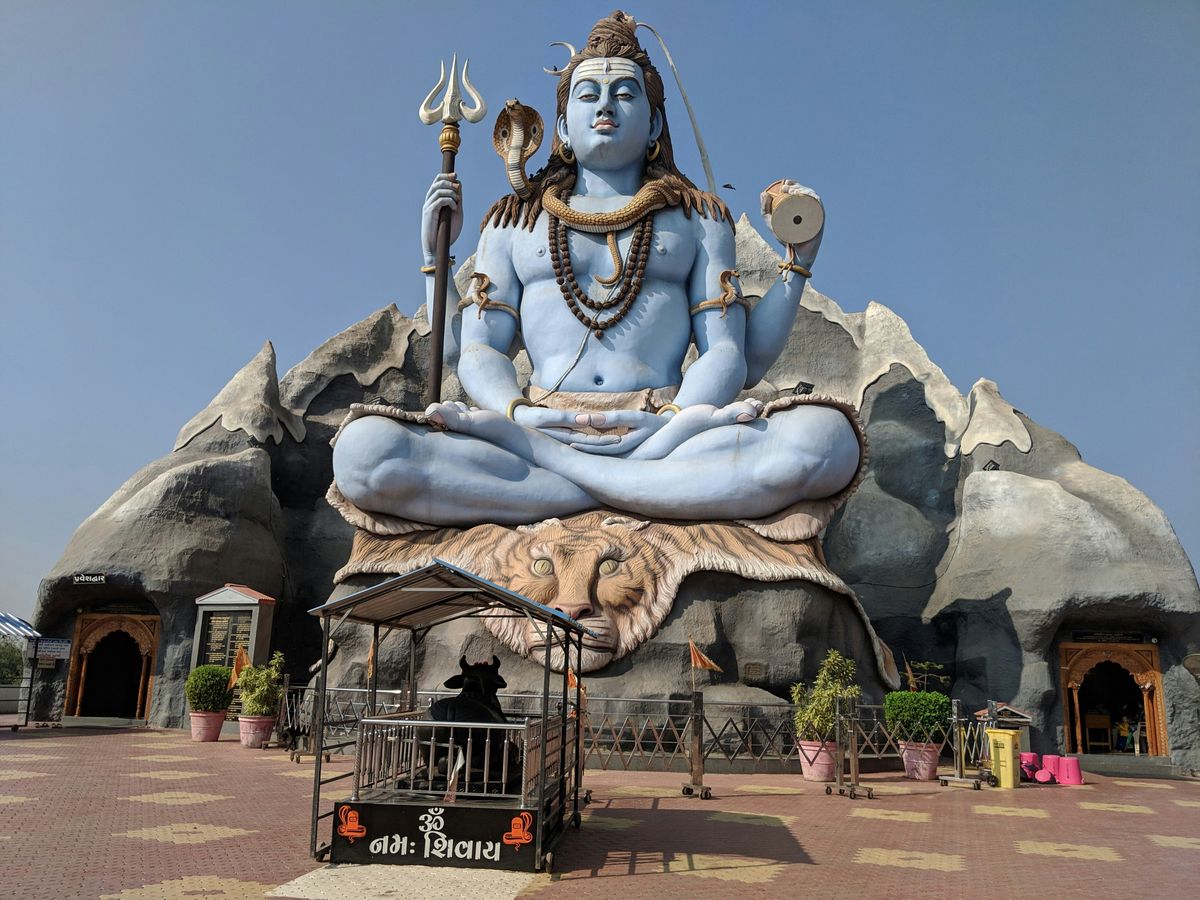
India, a land steeped in spirituality and ancient traditions, is home to countless temples dedicated to various deities. Among them, the temples dedicated to Lord Shiva stand out for their grandeur, architectural brilliance, and spiritual significance. This guide takes you on a journey across the diverse landscapes of India to explore some of The most famous and powerful Lord Shiva temples that continue to draw millions of devotees from around the world.
As we traverse the length and breadth of India, these temples stand as testaments to the enduring devotion of millions towards Lord Shiva. Each temple carries its unique history, cultural significance, and architectural brilliance, inviting pilgrims and travelers alike to experience the divine energy that resonates within these sacred spaces. Embark on this spiritual journey to witness the grandeur of the most famous and powerful Lord Shiva temples across India, where faith converges with the eternal.
Most Famous and Powerful Shiva Temples
1. Kashi Vishwanath Shiva Temple
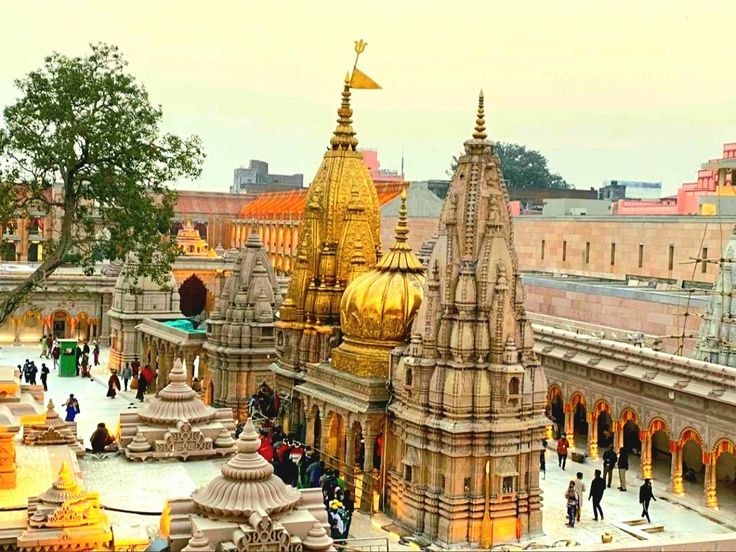
Certainly! The Kashi Vishwanath Temple, located in Varanasi, Uttar Pradesh, is one of the most revered and holiest temples dedicated to Lord Shiva in India. Here are more details about this iconic temple:
Location: The Kashi Vishwanath Temple is situated in the heart of Varanasi, also known as Kashi, on the western bank of the holy river Ganges. Varanasi is considered one of the oldest living cities in the world and holds immense spiritual significance in Hinduism.
Historical Significance : The temple has a rich history that dates back to ancient times. It is believed to have been destroyed and reconstructed several times throughout history. The present structure was built by Ahilya Bai Holkar, the Maratha queen, in 1780. The temple complex has undergone various renovations over the centuries, and the current structure is a blend of Maratha and Mughal architectural styles.
Jyotirlinga - The Lingam of Light: Kashi Vishwanath Temple is home to one of the twelve Jyotirlingas, which are considered to be the most sacred abodes of Lord Shiva. The Jyotirlinga in this temple is known as Vishweshwara or Vishwanath, meaning "Ruler of the Universe." Pilgrims believe that a visit to this sacred shrine helps attain moksha (liberation from the cycle of birth and death).
Spiritual Importance: Devotees from all over the world visit Kashi Vishwanath Temple to seek the blessings of Lord Shiva. It is believed that a dip in the Ganges River and a visit to the temple can purify one's soul. The spiritual aura of Varanasi, coupled with the presence of the Jyotirlinga, makes this temple a significant pilgrimage destination for Hindus.
Temple Complex: The temple complex is not just limited to the main sanctum with the Jyotirlinga. It also houses several smaller shrines dedicated to various deities, including Lord Kaal Bhairav, a fierce form of Lord Shiva. The complex is adorned with intricate carvings, sculptures, and spires, reflecting the architectural brilliance of its different construction phases.
Gyanvapi Mosque: Adjacent to the temple is the Gyanvapi Mosque, which was built by Mughal Emperor Aurangzeb in the 17th century. The mosque is connected to the temple through a small corridor. The presence of the mosque adds to the historical and cultural significance of the temple complex.
Temple Rituals: The Kashi Vishwanath Temple is known for its elaborate daily rituals, including morning and evening aartis (ceremonial worship with lamps), which are attended by large numbers of devotees. Special festivals like Mahashivratri witness grand celebrations and attract pilgrims in even larger numbers.
In summary, the Kashi Vishwanath Temple is not just a physical structure; it represents the spiritual and cultural heritage of Varanasi and holds a special place in the hearts of millions of devotees who seek solace and divine blessings at this sacred abode of Lord Shiva.
Varanasi is home to Baba Kashi Vishwanath Temple, which is dedicated to Bhagwan Shiva. It enshrines one of the 12 Jyotirling of Shiva. It is said that the Kashi Vishwanath temple was rebuilt several times. The latest structure standing here dates back to the 18th century.
The Kashi Vishwanath temple complex consists of a series of smaller shrines, located in a small lane called the Baba Vishwanatha Galli, near the Ganga River.
The original Kashi Vishwanath temple was destroyed by the army of Qutb-ud-din Aibak in 1194 CE when he defeated the Raja of Kannauj as a commander of Mohammad Ghori.
The temple has a beautifully carved Golden spire and every devotee here can make their offerings to the deity directly. The Sivalinga is placed in a square pit about 2 feet deep and is always immersed in a pool of milk and water offered by devotees.Just outside the main shrine, there are 2 sub-shrines for Siva and other of Goddess Annapoorna, Guru of Kasi Viswanath.
2. Shree Somnath Shiva Temple,
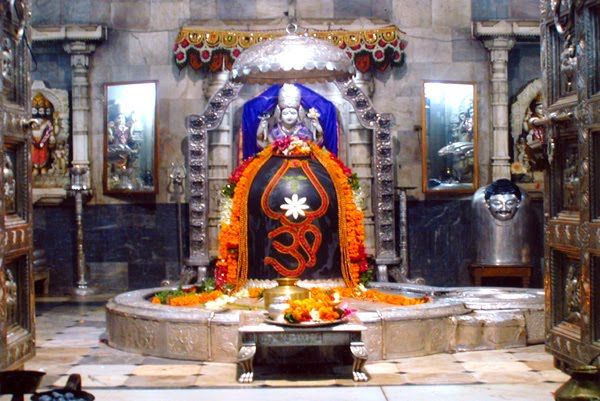
Certainly! The Shree Somnath Temple, located in Prabhas Patan near Veraval in Saurashtra, Gujarat, is one of the twelve Jyotirlingas and holds great significance in Hindu mythology. Here are more details about this revered Shiva temple:
Historical Significance: The Somnath Temple has a rich history that spans thousands of years. It is believed to be the first among the twelve Jyotirlingas and is mentioned in ancient Hindu texts. The temple has faced numerous invasions and reconstructions over the centuries, symbolizing the resilience of faith and the spirit of reconstruction.
Jyotirlinga - The Shrine of Light: The presiding deity in the temple is Lord Somnath, representing the "Lord of the Moon." The Jyotirlinga is said to be self-manifested and is considered one of the most sacred symbols of Lord Shiva. Devotees believe that a pilgrimage to Somnath is a journey to attain salvation and liberation.
Architectural Marvel: The temple's architecture is a splendid blend of Chalukya and Solanki styles, showcasing intricate carvings, sculptures, and a breathtaking design. The temple complex is surrounded by a massive wall, and the shikhara (spire) of the main temple is an awe-inspiring sight.
Somnath Trust and Reconstruction: The present structure of the Somnath Temple was reconstructed in the 1950s under the patronage of Sardar Vallabhbhai Patel and K. M. Munshi. The temple is managed by the Shree Somnath Trust, which works towards the preservation and development of the temple complex.
Somnath Aarti and Rituals: The temple follows a strict ritualistic schedule, including daily aartis and pujas. The Aarti performed at the temple is a grand spectacle that draws devotees from far and wide. The sound of the conch, rhythmic ringing of bells, and the chanting of hymns create a spiritually charged atmosphere.
Surrounding Attractions: The temple complex houses various smaller shrines dedicated to different deities, contributing to the overall spiritual ambiance. Additionally, the temple's location near the Arabian Sea adds to the picturesque setting, making it a serene and peaceful pilgrimage destination.
Somnath Mahadev Mandir Trust and Facilities: The Somnath Mahadev Mandir Trust manages the temple complex and ensures the smooth functioning of the pilgrimage activities. The trust also provides facilities for the convenience of pilgrims, including accommodation, dining, and other amenities.
Festivals and Celebrations: Mahashivratri is celebrated with great fervor at the Somnath Temple. Special events, cultural programs, and religious processions mark the occasion, attracting a large number of devotees.
In essence, the Shree Somnath Temple stands as a symbol of devotion, resilience, and the enduring spirit of Hinduism. Pilgrims and visitors alike are drawn to its spiritual aura and the sacred presence of the Jyotirlinga, making it a must-visit destination for those seeking the blessings of Lord Somnath.
Somnath Temple is situated at ‘Prabhas Kshetra’ near in Saurashtra in the state of Gujarat on the Arabian Sea. This temple is basically a home of 12 ‘Jyotirlinga’ of India. The seven-storied structure of the Somnath temple is tall to 155 feet and was constructed in the Chalukya style of architecture. The temple was built by the professionals and masters masons of the Sompuras, Gujarat.
The temple and its landmark are not visible from Somnath seashore till Antarctica. In an inscription at the temple, it was written in Sanskrit on the Arrow-Pillar of the sea-protection wall. Dr. Rajendra Prasad the first president of India conveyed that- ‘’Somnath Temple signifies that the power of creation is always greater than the power of destruction’’. This temple has an illustrious history and religious importance and thus Somnath temple attracts thousands of pilgrims and visitors across the world. Tourists can also visit the place round the year but the best season to visit is winters – from October to March.
3. Kedarnath ShivaTemple, Uttarakhand

Certainly! The Kedarnath Temple, located in the Garhwal Himalayas of Uttarakhand, India, is one of the holiest and most revered shrines dedicated to Lord Shiva. Here are more details about this sacred pilgrimage site:
Geographical Location: Kedarnath Temple is situated at an altitude of 3,583 meters (11,755 feet) above sea level in the picturesque Kedar Valley, flanked by breathtaking snow-capped peaks and the Mandakini River. It is a part of the Char Dham Yatra, a significant pilgrimage circuit in the Himalayas.
Historical and Mythological Significance: According to Hindu mythology, Kedarnath is one of the twelve Jyotirlingas, believed to be the cosmic form of Lord Shiva. The temple has ancient roots, and its existence is mentioned in various Puranas. It is associated with the Mahabharata and is believed to have been built by the Pandavas.
Panch Kedar: Kedarnath is part of the Panch Kedar, a group of five Shiva temples in the Garhwal region, each associated with a different body part of Lord Shiva. Kedarnath represents the hump of Lord Shiva.
Architecture: The temple's architecture is simple yet elegant. The main shrine is made of massive stone slabs, and the temple complex includes a Nandi statue, a traditional assembly hall, and smaller shrines dedicated to other deities. The Kedarnath temple is built in the traditional North Indian style of architecture.
Pilgrimage Journey: The journey to Kedarnath is considered a challenging pilgrimage, and it involves a trek of approximately 16 kilometers from Gaurikund. The last stretch of the trek is often covered by palanquins or ponies. The trek passes through picturesque landscapes, including dense forests, meadows, and riverbanks, offering breathtaking views of the Himalayas.
Opening and Closing Dates: Due to extreme weather conditions in the region, the Kedarnath Temple is open to pilgrims only for a limited period each year, usually from late April to early November. The closing ceremony, known as the "Bhoomi Poojan," marks the end of the pilgrimage season.
Spiritual Practices: Devotees believe that a visit to Kedarnath and offering prayers at the temple can cleanse them of their sins and lead to salvation (moksha). The chanting of mantras, ringing of bells, and the serene surroundings create a spiritually charged atmosphere.
Maha Shivaratri Celebrations: Maha Shivaratri, the great night of Lord Shiva, is celebrated with grandeur at Kedarnath. Pilgrims and locals participate in special prayers, rituals, and cultural events during this auspicious occasion.
In summary, Kedarnath Temple is not just a religious site but a symbol of devotion and the indomitable spirit of pilgrims who embark on a challenging journey to seek the divine blessings of Lord Shiva in the pristine Himalayan setting. The temple's remote location and the awe-inspiring natural surroundings contribute to its spiritual significance
According to a Hindu mythological, it was believed that Kedarnath was the holy residence of Lord Shiva after a consistent request from Nar – Narayan a 5th Vishnu Avatar. After the end of the great war of Mahabharat, Vyas advised the Pandava brothers to go and meet Lord Shiva and ask him for forgiveness since they had killed their kin the Kauravas. The story goes ahead to mention that Lord Shiva was in no mood to forgive them and transformed himself into a bull. He also hid by sinking headfirst into the ground. Bhim, the strongest of the Pandava brothers then immediately grabbed the bull’s tail and started pulling him to make him forcefully appear before them. Due to this Lord Shiva’s bull form got divided and appeared at the sites of Panch Kedar. The earliest mention for kedarnath is seen in the Skanda purana which is a holy Hindu book that marks the origin of the holy river Ganga.
Another interesting legend revolves around Nar and Narayan – two of the most popular incarnations of Lord Vishnu. It is believed that Nar and Narayan had performed some rigorous penance here with an earthen shiv lingam at Bharat Khand. Lord Shiva was extremely pleased with their penance and appeared before them and asked them for a boon. They asked him to stay permanently at Kedarnath in the form of a jyotirlinga. Hearing this, the lord agreed to fulfill their wishes and enshrined himself in the form of a jyotirlinga above which the main dham shrine of Kedarnath was constructed.
4. Kailashnath Shiva Temple, Ellora
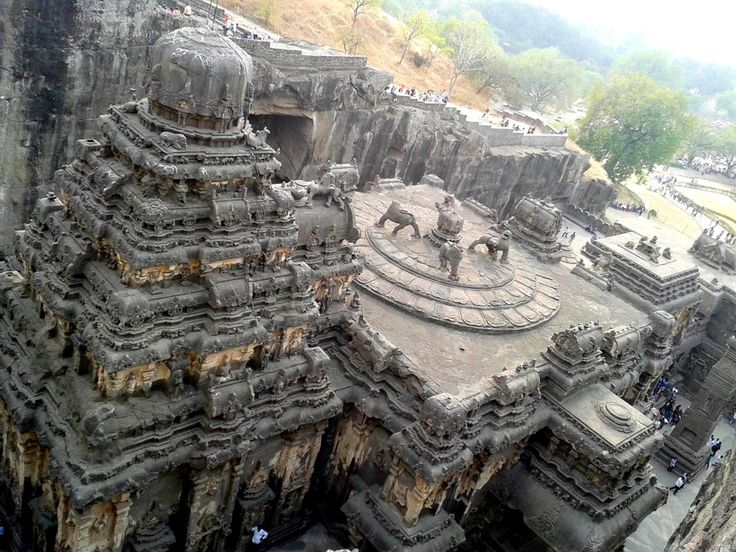
I believe there might be some confusion in your question. The Kailashnath Temple, dedicated to Lord Shiva, is actually located at Ellora in Maharashtra, India, not in Kailash. Kailash refers to Mount Kailash in Tibet, a sacred peak in Hinduism, Buddhism, and Jainism. The Kailashnath Temple at Ellora is a remarkable rock-cut temple and is not to be confused with the Mount Kailash.
Location: The Kailashnath Temple is situated in the Ellora Caves complex, which is a UNESCO World Heritage Site. Ellora is located near Aurangabad in the state of Maharashtra, India.
Architecture: This temple is a marvel of ancient Indian architecture and engineering. It is the largest monolithic rock-cut structure in the world. Carved out of a single rock, the temple depicts Mount Kailash, the abode of Lord Shiva, and is surrounded by smaller structures, creating an impressive courtyard.
Time of Construction: The construction of the Kailashnath Temple is believed to have taken place during the 8th century under the patronage of the Rashtrakuta king Krishna I. The intricate carvings and sculptures on the temple showcase the high level of craftsmanship during that era.
Carvings and Sculptures: The entire temple complex is adorned with intricate carvings depicting various mythological themes, including scenes from the Ramayana and Mahabharata. The temple features life-sized sculptures of gods, goddesses, celestial beings, and mythological creatures.
Main Shrine: The main shrine of the Kailashnath Temple is dedicated to Lord Shiva and includes a lingam as the central deity. The structure is surrounded by a courtyard with other deities, including Nandi, the sacred bull, and various forms of Lord Shiva.
Cave Complex: Ellora Caves, where the Kailashnath Temple is located, is a complex of Buddhist, Hindu, and Jain rock-cut caves. The Kailashnath Temple stands out as a significant Hindu structure within this diverse cave complex.
Symbolic Representation: The temple's construction is considered a symbolic representation of Mount Kailash, the mythical abode of Lord Shiva. The complex represents a cosmic structure, with the temple serving as the celestial home of Lord Shiva.
Accessibility: The Kailashnath Temple is accessible to visitors, and exploring the Ellora Caves allows one to witness the architectural and artistic brilliance of ancient Indian civilizations.
In conclusion, the Kailashnath Temple at Ellora is an architectural masterpiece that reflects the artistic and religious fervor of ancient India. It stands as a testament to the rich cultural and religious heritage of the region.
The Kanchi Kailasanathar temple is that the oldest and delightful handmade structure in Kanchi Puram settled in Tamil Nadu, India, it's an oldest Hindu temple within the Dravidian art form. it's dedicated to Lord Shiva and is understood for its historical importance. The temple was engineered from 685-705 AD by a Rajasimha ruler of the Pallava folk.
The low-slung sandstone compound contains an oversized variety of carvings, as well as several half-animal deities that were common throughout the first Dravidian architectural period. The structure contains fifty-eight little shrines that are dedicated to numerous types of Shiva. These are engineered into niches on the inner face of the high compound wall of the circumlocutory passage. The temple is one among the foremost distinguished traveler attractions of the town.
5. Brihadeeswara Shiva Temple, Thanjavur
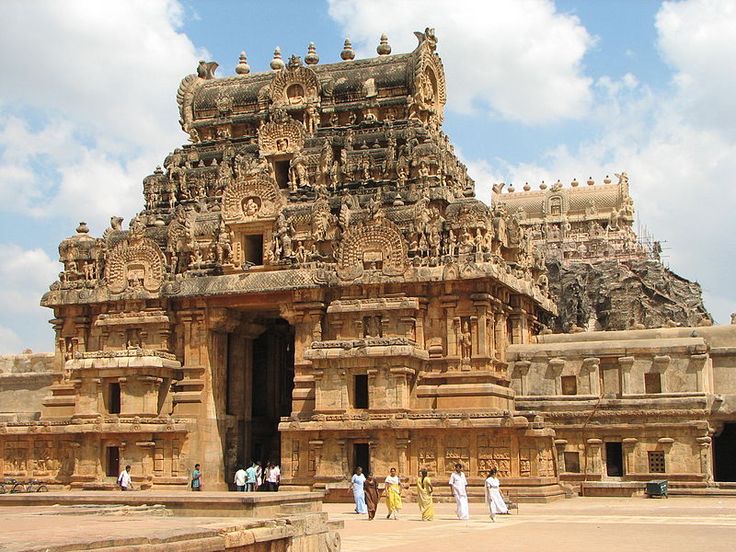
Certainly! The Brihadeeswara Temple, also known as the Big Temple, is a magnificent Hindu temple dedicated to Lord Shiva located in Thanjavur (Tanjore), Tamil Nadu, India. It stands as a testament to the Chola dynasty's architectural prowess and is a UNESCO World Heritage Site. Here are more details about this historic temple:
Historical Significance: The Brihadeeswara Temple was built by Raja Raja Chola I in the 11th century AD. Construction is believed to have been completed in 1010 CE. The temple is a remarkable example of Chola architecture, representing the height of Chola power and cultural achievement.
Architectural Marvel: The temple is renowned for its grandeur and architectural brilliance. The central vimana (tower) rises to a height of around 66 meters (216 feet), making it one of the tallest in the world for its time. The temple complex also includes a massive courtyard, a Nandi (bull) mandapa, and other smaller shrines.
Shikhara and Kalasha: The towering vimana is topped with a massive octagonal dome known as the shikhara. At its apex, there is an 80-ton monolithic granite block, known as the Kalasha or "Vimana Kalasha," symbolizing the pinnacle of Dravidian temple architecture.
Mural Paintings and Frescoes: The walls of the temple once featured vibrant frescoes and mural paintings, depicting scenes from Hindu mythology and the daily life of the Chola period. While many of these paintings have faded over time, some sections still provide glimpses of the past artistic glory.
Nandi Mandapa: In front of the main shrine, there is a separate mandapa (hall) housing a massive monolithic Nandi, the sacred bull and the mount of Lord Shiva. The Nandi mandapa is intricately carved and adds to the overall grandeur of the temple.
Peruvudaiyar Kovil Inscription: The Brihadeeswara Temple is not just a marvel of architecture but also a historical treasure. Inscriptions on the temple walls provide details about the construction, the administration during the Chola period, and the socio-economic conditions of the time.
Maha Shivaratri Celebrations: Maha Shivaratri, the great night of Lord Shiva, is celebrated with great fervor at the Brihadeeswara Temple. Devotees from all around gather to participate in special rituals, prayers, and cultural events.
UNESCO World Heritage Site: In 1987, the Brihadeeswara Temple was designated as a UNESCO World Heritage Site, recognizing its cultural and historical significance. It is considered a masterpiece of Chola architecture and a symbol of the Chola dynasty's contribution to temple construction.
Ongoing Preservation Efforts: The Archaeological Survey of India (ASI) and other organizations are actively involved in the preservation and restoration of the temple. Efforts are made to protect the structure from environmental factors and ensure its longevity for future generations.
In essence, the Brihadeeswara Temple is not just a place of worship but a living testament to the cultural, artistic, and architectural brilliance of ancient India. It continues to be a pilgrimage site, drawing visitors and devotees from around the world to marvel at its majestic structure and spiritual ambiance.
Brihadeeswara Shiva temple in Thanjavur is one of the most ancient Lord Shiva Temple, Temple is located in the city of Thanjavur in Tamil Nadu, India. Brihadeeswara Temple is also known as "Raj-Rajeshwara" and "Raje-Rajeshwaram". Brihadeeswara Shiva temple is one of the Biggest and famous Shiva Temples In India. Thanjavur was known as “The rice bowl of Tamil Nadu,” which was an important city to the "Cholas Panth". This Temple was developed by King of Chola Panth Shree Arumoshivarm in 1100 years ago and some development like the outside wall was done in the year 1406. Construction of the Brihadisvara Temple is in the center of the city. Thanjavur had the distinction of being specifically constructed as a religious city with the temple centermost.
The most interesting part of this temple is the shadow of the temple, which surprisingly never falls on the ground at noon. The Brihadeshwar Temple is one of the tallest and famous temples in the world and is so designed that the viman does not cast a shadow at noon during any part of the year.
6. Mahakaleshwar Shiva Temple
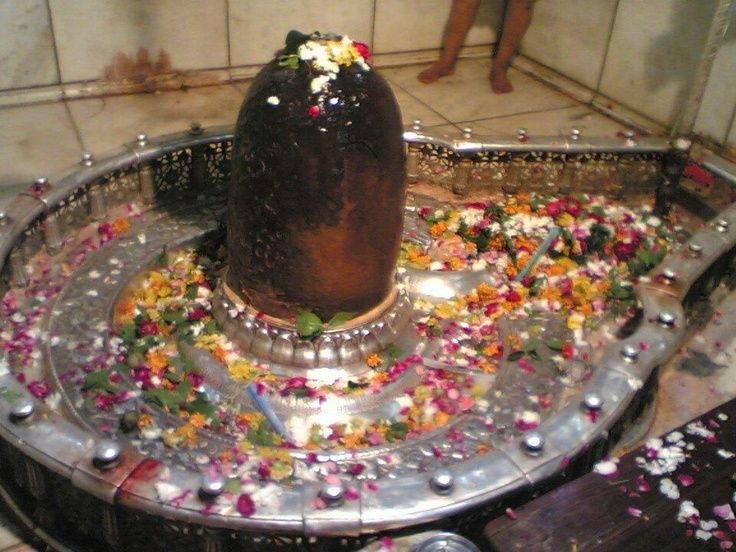
Certainly! The Mahakaleshwar Temple, located in Ujjain, Madhya Pradesh, is one of the most sacred and revered shrines dedicated to Lord Shiva in India. Here are more details about this historic and spiritually significant temple:
Location: The Mahakaleshwar Temple is situated on the western banks of the Rudra Sagar Lake in Ujjain, a city with a rich cultural and historical heritage. Ujjain is considered one of the seven Moksha-puris in Hinduism.
Jyotirlinga: Mahakaleshwar is one of the twelve Jyotirlingas, which are believed to be the most sacred abodes of Lord Shiva. The Jyotirlinga in this temple is self-manifested and represents the eternal and infinite nature of Lord Shiva.
Historical Significance: The temple's history is intertwined with the rich tapestry of Indian mythology and history. It is believed to have ancient origins, with references in various Puranas. The current structure is a result of several renovations and reconstructions over the centuries.
Nagar Architecture: The Mahakaleshwar Temple is a classic example of Nagara style architecture, characterized by its tall spires and intricate carvings. The temple complex includes a courtyard with smaller shrines dedicated to various deities.
Bhasma Aarti: One of the unique rituals performed at the Mahakaleshwar Temple is the Bhasma Aarti. It is a daily ritual where the deity is adorned with ash (bhasma), and devotees believe that witnessing this ritual grants blessings and purification.
Shravan Month and Lingodbhavam: The month of Shravan holds special significance at the Mahakaleshwar Temple. During this time, the Lingodbhavam ceremony takes place, signifying the emergence of the Jyotirlinga from the ground. Pilgrims flock to the temple during this auspicious month to witness this divine event.
Simhastha Kumbh Mela: Ujjain is one of the four locations where the Kumbh Mela is held, known as the Simhastha Kumbh Mela. Devotees gather in large numbers to take a holy dip in the Shipra River and seek the blessings of Lord Mahakaleshwar during this major pilgrimage event.
Kal Bhairav Shrine: Within the Mahakaleshwar Temple complex, there is a shrine dedicated to Kal Bhairav, a fierce form of Lord Shiva. Devotees offer prayers at this shrine seeking protection and blessings.
Management: The temple is managed by the Mahakaleshwar Mandir Prabandh Samiti, and efforts are made to ensure the smooth conduct of daily rituals, special ceremonies, and the overall maintenance of the sacred site.
Rudra Sagar Lake: The temple is situated on the banks of Rudra Sagar Lake, adding to the serene and tranquil atmosphere. Pilgrims often take a holy dip in the lake before entering the temple premises.
In summary, the Mahakaleshwar Temple is not only a center of religious fervor but also a symbol of Ujjain's cultural and spiritual heritage. Devotees and visitors alike are drawn to its divine aura, unique rituals, and the sacred presence of the Jyotirlinga, making it a significant pilgrimage destination in India.
Ujjain (also known Ujjayini, Avantika), is an ancient city of Malwa region in central India, on the eastern bank of the Kshipra River. Ujjain means city on ascendance with conquest scream. Ujjain comes from Ujjainee in ancient times, it is also called the gleaming area of the paradise and the holy city of temples for the Hindus. According to Hindu scriptures it was initially called Avantika.
Mahakaleshwar Jyotirlinga is one of the most famous Hindu temples dedicated to Lord Shiva and is one of the twelve Jyotirlingams, which are supposed to be the most sacred abodes of Shiva. It is located in the ancient city of Ujjain in the state of Madhya Pradesh, India. The temple is situated on the side of the Rudra Sagar lake. The presiding deity, Shiva in the lingam form is believed to be Swayambhu, deriving currents of power (Shakti) from within itself as against the other images and lingams that are ritually established and invested with mantra-shakti.
7. Bhimashankar Shiva Temple
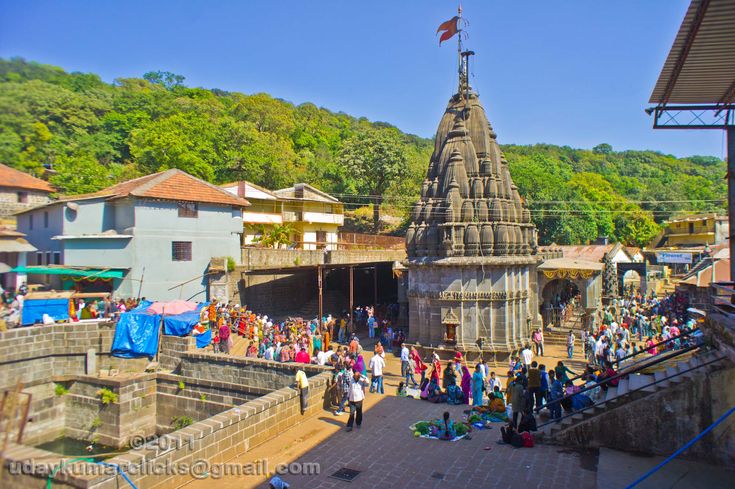
The Bhimashankara temple is a composite of old and the new structures and is built in the Nagara style of architecture. It is a modest temple yet graceful temple and it dates back to mid 18th century. The shikhara of the temple was built by Nana Phadnavis. The great Maratha ruler Shivaji is also said to have made endowments to this temple to facilitate the carrying out, of worship services. As with other Shiva temples in this area, the sanctum is at a lower level.
Although the structure here is fairly new, the shrine Bhimashankaram (and the Bhimarathi river) have been referred to in literature dating back to the 13th century CE. Saint Jnaneshwar is said to have visited Tryambakeshwar and Bhimashankar.
Other temples and shrines: There is a shrine to Kamalaja near the Bhimashankara temple. Kamalaja is an incarnation of Parvati, who aided Shiva in his battle against Tripuraasura. Kamalajaa was worshipped with offerings of lotus flowers by Bhrama. Shaakini and Daakini the Shivaganas who helped Shiva in the battle against the demon are also honored and worshipped here.
The Mokshakund thirtha is located behind the Bhimashankara temple, and it is associated with the rishi Kaushika. There are also the Sarvathirtha, the Kusharanya thirtha where the Bhima river begins to flow eastward, and the Jyanakund.
8. Omkareshwar Shiva Temple
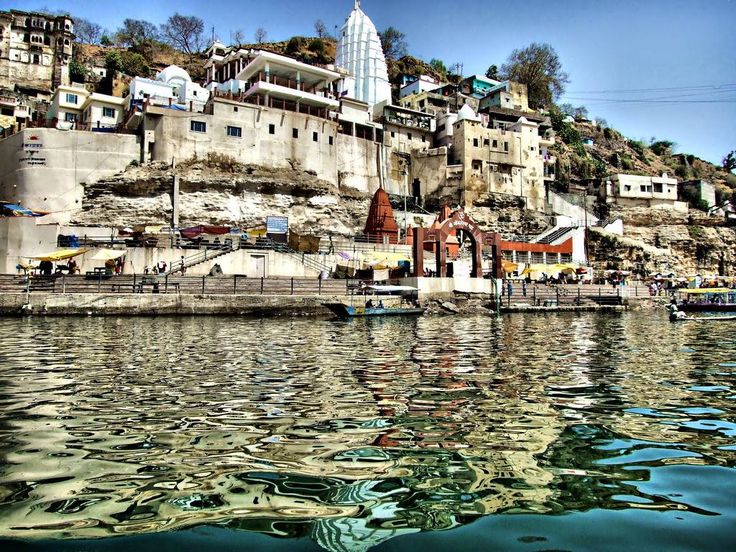
Certainly! The Omkareshwar Temple, dedicated to Lord Shiva, is a revered pilgrimage site located on the Mandhata Island in the Narmada River in Madhya Pradesh, India. Here are more details about this sacred and spiritually significant temple:
Location: The Omkareshwar Temple is situated on the Mandhata Island, shaped like the Hindu symbol "Om," in the Narmada River. The island is connected to the mainland by a bridge, providing access to pilgrims and visitors.
Jyotirlinga: Omkareshwar is one of the twelve Jyotirlingas, which are considered the most sacred abodes of Lord Shiva. The Lingam (symbol of Shiva) in the temple is believed to be self-manifested and represents the cosmic energy of Lord Shiva.
Omkareshwar and Mamleshwar: The island hosts two main temples – Omkareshwar and Mamleshwar (or Amareshwar). While Omkareshwar is situated on the northern part of the island, Mamleshwar is on the southern side. Both temples are dedicated to Lord Shiva, and devotees often visit both as part of their pilgrimage.
Mamleshwar Temple: The Mamleshwar Temple is an ancient structure with intricate carvings and architectural beauty. It is believed to have been built in the medieval period and showcases the artistic heritage of the region.
Narmada Parikrama: Omkareshwar is a significant point on the Narmada Parikrama route, a pilgrimage where devotees circumambulate the Narmada River. The island and the temple play a crucial role in this spiritual journey.
Ghats and Pilgrimage Routes: The temple complex is surrounded by ghats (steps leading to the river), where pilgrims perform rituals and take holy dips in the Narmada. The island has several pilgrimage routes and provides a serene environment for spiritual practices.
Aarti and Rituals: Daily aarti (ceremonial worship with lamps) is performed at the Omkareshwar Temple, creating a divine and spiritually charged atmosphere. Special rituals and ceremonies take place during festivals and auspicious occasions.
Parikrama Path: Around the Omkareshwar Temple, there is a parikrama path (circumambulation path) that devotees walk as part of their religious practices. The path offers panoramic views of the Narmada River and the surrounding landscape.
Shri Omkar Mandhata: The temple complex also includes the Shri Omkar Mandhata, a sacred shrine associated with Lord Shiva. It attracts devotees and tourists alike due to its religious and architectural significance.
Tourist Attractions: Apart from the religious aspects, the scenic beauty of the Narmada River and the Mandhata Island attracts tourists. The area offers a peaceful retreat for those seeking a tranquil environment.
In conclusion, the Omkareshwar Temple is not only a significant pilgrimage site but also a place of cultural and natural beauty. Devotees flock to this sacred island to seek the blessings of Lord Shiva and experience the spiritual ambiance that surrounds the temple and the Narmada River
9. Mallikarjuna Shiva Temple
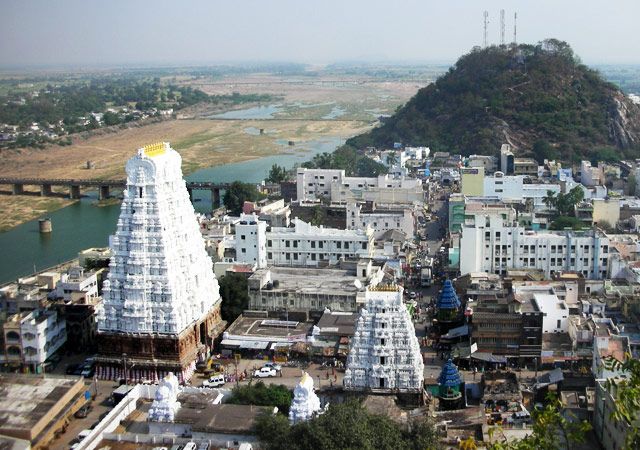
The Mallikarjuna Swamy Temple, located in Srisailam, Andhra Pradesh, is one of the prominent and ancient Shiva temples in South India. Here are more details about this sacred temple:
Location: The Mallikarjuna Swamy Temple is situated on the southern bank of the Krishna River, in the town of Srisailam. The temple is part of the Srisailam Devasthanam complex, which also includes the Bhramaramba Mallikarjuna Temple dedicated to Goddess Parvati.
Jyotirlinga: Mallikarjuna Swamy Temple is one of the twelve Jyotirlingas, which are revered as the most sacred shrines of Lord Shiva. The Jyotirlinga here is known as Mallikarjuna, representing a manifestation of Lord Shiva's divine light.
Historical Significance: The temple has a rich history dating back to ancient times, with mentions in various Puranas. It has undergone multiple renovations and expansions over the centuries, showcasing the architectural and cultural contributions of different dynasties.
Architecture: The Mallikarjuna Swamy Temple displays a combination of Dravidian and Nagara architectural styles. The temple complex includes a large courtyard, a towering main entrance (Raja Gopuram), and various halls adorned with intricate carvings.
Mallikarjuna Sankalpa: Devotees believe that taking a sacred vow (sankalpa) at the Mallikarjuna Swamy Temple is highly auspicious. Pilgrims often visit the temple to fulfill their vows and seek the blessings of Lord Shiva.
Akka Mahadevi Caves: The temple complex also includes the Akka Mahadevi Caves, named after the renowned Kannada saint and poet Akka Mahadevi. These caves are believed to be associated with her meditation and spiritual practices.
Srisailam Wildlife Sanctuary: The temple is located near the Srisailam Wildlife Sanctuary, adding to the scenic beauty of the surroundings. Pilgrims often combine their visit to the temple with exploration of the natural beauty in the region.
Patala Ganga: A sacred stream called Patala Ganga flows near the temple, and devotees consider it auspicious to take a dip in its waters before entering the main sanctum. The water is believed to have purifying properties.
Mallanna Sagar Dam: The Mallanna Sagar Dam, located near the temple, is a significant water reservoir. Pilgrims visiting the temple often take a boat ride on the Krishna River to witness the scenic landscapes.
Festivals: Mahashivratri is celebrated with great enthusiasm at the Mallikarjuna Swamy Temple. Devotees participate in special rituals, abhishekams (ceremonial baths), and cultural events during this auspicious occasion.
In summary, the Mallikarjuna Swamy Temple in Srisailam is not only a place of religious significance but also an architectural marvel and a symbol of the region's cultural heritage. Devotees visit the temple to seek spiritual solace, fulfill their vows, and experience the divine presence of Lord Mallikarjuna.
Mallikarjuna Swamy Temple is dedicated to Lord Shiva. It is made with black pillars and has many carvings of various events. There are many shrines in this temple. This temple is located in Kambaduru.
Sri Mallikarjuna Swamy, Shiva Temples In India is enlisted in the 12 Jyotirlinga temples, devoted to Lord Shiva. Each Jyotirlinga temple has the idol of Lingam as the presiding deity. The manifestation of Lord Shiva is dissimilar for every Jyotirlinga temple. The Sri Mallikarjuna temple faces the east and houses the main deity, Lingam.
It is one of the 275 Paadal Petra Sthalams. The uniqueness of this temple dishonesty in the amalgamation of Jyotirlinga and Mahasakthi in a single campus, which is one of its kind. It is the most celebrated and ancient temple in town. It was built by King Harihar Raya Vijayanagar.
The temple has carvings and sculptures in the walls, which adds to its splendor. It is one of the most gorgeous and holy temples in town, located amidst the majestic Nallamala Hill. One must completely not miss this on a visit to Srisailam.
10. Pashupatinath Shiva Temple, Mandsaur Nepal
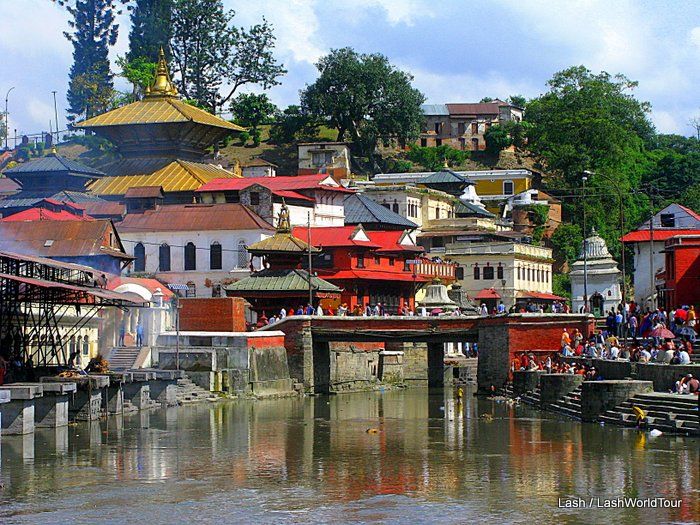
It seems there might be some confusion in your question. The Pashupatinath Temple is a famous Hindu temple, but it is located in Kathmandu, Nepal, not in Mandsaur. Mandsaur is a town in the Indian state of Madhya Pradesh. Let me provide details about the Pashupatinath Temple in Kathmandu, Nepal:
Pashupatinath Temple, Kathmandu, Nepal:
Location: The Pashupatinath Temple is situated on the banks of the Bagmati River in the eastern part of Kathmandu, the capital city of Nepal.
Significance: Pashupatinath is one of the most sacred temples for Hindus and is considered the holiest temple dedicated to Lord Shiva in Nepal. It is a UNESCO World Heritage Site and a major pilgrimage destination for devotees from Nepal and across the world.
Shiva Lingam and Deity: The main deity of the temple is a sacred Shiva Lingam, representing Lord Shiva. The temple complex includes various other shrines and idols dedicated to different deities.
Architecture: The Pashupatinath Temple showcases traditional Nepalese pagoda-style architecture. The temple has intricate wood carvings, gilded roofs, and detailed artwork, making it a beautiful representation of Nepalese craftsmanship.
Ghats and Cremation: Along the Bagmati River, there are ghats (steps leading to the river) where Hindu cremation ceremonies take place. The temple complex is an important site for the last rites of Hindus, and the Pashupatinath area is considered a sacred funeral site.
Maha Shivaratri Festival: The Maha Shivaratri festival is celebrated with great enthusiasm at Pashupatinath Temple. Thousands of devotees gather to offer prayers, perform rituals, and participate in the festive atmosphere.
Pujas and Aartis: Daily rituals, pujas, and aartis are conducted at the temple. The sound of bells, chanting of mantras, and the fragrance of incense create a spiritually charged atmosphere.
Pashupatinath Area: The temple complex includes a larger area with ashrams, shrines, and other religious structures. Pilgrims often circumambulate the main temple as part of their worship.
Pashupati Area Development Trust (PADT): The Pashupati Area Development Trust manages and oversees the administration and maintenance of the Pashupatinath Temple and its surroundings.
Visitors and Pilgrims: The temple attracts not only devotees but also tourists interested in exploring the cultural and religious heritage of Nepal. The vibrant and spiritual ambiance of the temple area is a unique experience for visitors.
The Pashupatinath Temple in Kathmandu, Nepal, is a significant pilgrimage site and a symbol of Nepal's rich cultural and religious traditions. Devotees and visitors alike are drawn to its sacred atmosphere and the awe-inspiring architecture that reflects the spiritual essence of Hinduism.
One of the most sacred Hindu temples of Nepal – Pashupatinath Temple is located on both banks of Bagmati River on the eastern outskirts of Kathmandu.
Pashupatinath is the most important God Shiva Temple. Every year Pashupatinath Temple attracts hundreds of elderly followers of Hinduism.
They arrive here to find shelter for the last several weeks of their lives, to meet death, be cremated on the banks of the river, and travel their last journey with the waters of the sacred river Bagmati, which later meets the holy river the Ganges. Hinduists from every corner of Nepal and India are arriving here to die.
It is believed that those who die in Pashupatinath Temple are reborn as a human, regardless of any misconduct that could worsen their karma. The exact day of their death is predicted by astrologers in Mumbai of the temple. If you are attracted to the places where the spirit of death can be felt, then
11. Panchalingeshwara Shiva Temple, Karnataka
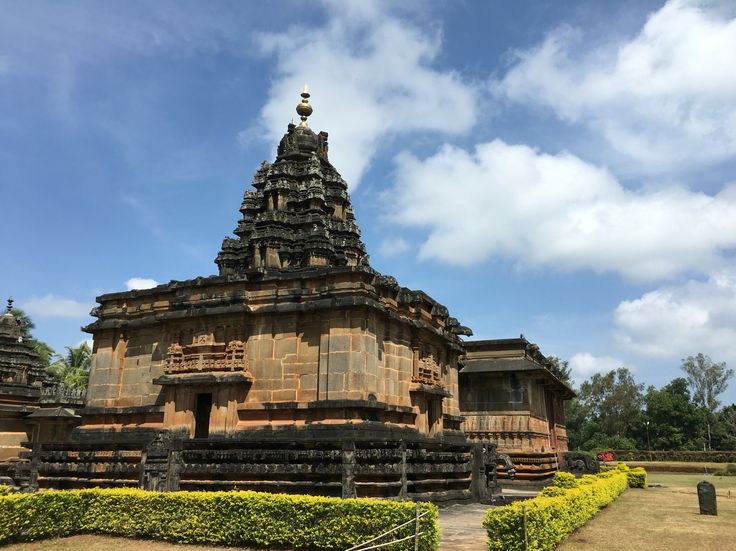
Shree Panchalingeshwara temple in Karnataka is one of the ancient and largest temples of Shiva in Dakshina Kannada District. This Shiva Temples In India is at the heart of Vittla city & currently managed by a committee.
Sree Panchalingeshwara temple is having a special architecture known as "Gaja Prusta" i.e. back of an elephant. Other temples built in this architecture are Madhur & Adur in Kerala.
This temple is located close to the eastern edge of Sedam town where a stream flows in a curve. Turning attention to the temple complex. It a group of four Shiva Temples. The complex's gateway is richly decorated with an arch, pair of Dwarapalas guarding the entrance. As we step in, there's one temple straight ahead.
To get accurate and up-to-date details about the Panchalingeshwara Shiva Temple in Karnataka, I recommend checking with local sources, such as residents in the area, tourism offices, or the temple authorities directly. They may provide information about the temple's history, significance, rituals, and any associated festivals.
Additionally, you may explore online resources, travel forums, or official Karnataka tourism websites for any recent updates or details about the Panchalingeshwara Shiva Temple. Local guides or residents familiar with the region could also offer valuable insights into the temple's significance and features.
12. Tejo Mahalaya, Shiva Temple, UP
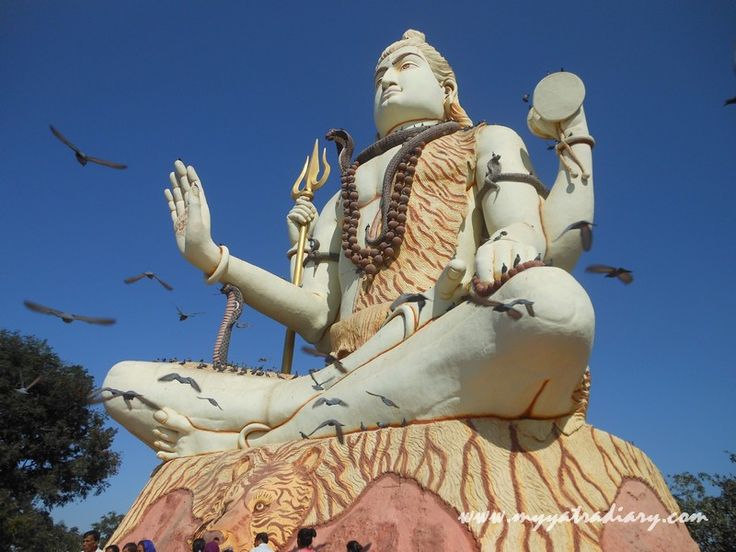
There is no widely recognized or historical evidence supporting the existence of a temple called "Tejo Mahalaya" dedicated to Lord Shiva in Uttar Pradesh or anywhere else. The name "Tejo Mahalaya" might be a misinterpretation or a misinformation, and it is not associated with any known Hindu temple.
It's crucial to note that the Taj Mahal, a renowned monument located in Agra, Uttar Pradesh, is sometimes the subject of conspiracy theories suggesting that it was originally a Hindu temple dedicated to Lord Shiva called "Tejo Mahalaya." However, these claims lack historical and archaeological evidence and are not accepted by mainstream historians and scholars.
The Taj Mahal, built by Mughal Emperor Shah Jahan in the 17th century, is widely recognized as a masterpiece of Mughal architecture and is a UNESCO World Heritage Site. It was constructed as a mausoleum for Shah Jahan's beloved wife Mumtaz Mahal.
If you are seeking information about a specific Shiva temple in Uttar Pradesh or any other historical site, I recommend providing more accurate details or checking reliable sources for accurate information. It's crucial to rely on verified historical and archaeological records to understand the cultural and religious heritage of different regions.
During their rule, they looted and destroyed hundreds of thousands of Hindu temples. Aurangzeb himself destroyed 10,000 Hindu temples during his reign! Some of the larger temples were converted into mosques or other Islamic structures. Ram Janmbhoomi (at Ayodhya), Kashi Vishwanath Temple in Varanasi, and Krishna Temple (at Mathura) are just two examples. Many others exist!
The most evident of such structures is the Taj Mahal--a structure supposedly devoted to carnal love by the Moghul king Shah Jahan to his favorite wife Mumtaz Mahal. Please keep in my mind that this is the same Shah Jahan who had a harem of 5,000 women and the same Shah Jahan who had an incestuous relationship with his daughter justifying it by saying, 'a gardener has every right to taste the fruit he has planted'! Is such a person even capable of imagining such a wondrous structure as the Taj Mahal let alone be the architect of it?
The answer is no. It cannot be. And it isn't as has been proven. The Taj Mahal is as much a Islamic structure as is mathematics a Muslim discovery! The famous historian Shri P.N. Oak has proven that the Taj Mahal is actually Tejo Mahalaya-- a shiv temple-palace. His work was published in 1965 in the book, Taj Mahal - The True Story. However, we have not heard much about it because it was banned by the corrupt and power-crazed Congress government of Bharat who did not want to alienate their precious vote bank--the Muslims.
13. Shore Shiva Temple, Mahabalipuram

The Shore Temple in Mahabalipuram, Tamil Nadu, India, is a significant and ancient Hindu temple dedicated to Lord Shiva. Here are more details about this renowned temple:
Location: The Shore Temple is located on the shores of the Bay of Bengal in Mahabalipuram, a UNESCO World Heritage Site known for its ancient rock-cut temples and sculptures.
Historical Significance: The Shore Temple is a part of the Group of Monuments at Mahabalipuram, dating back to the 7th century. It is one of the oldest structural stone temples in South India and represents the early stages of Dravidian temple architecture.
Architectural Style: The temple showcases classic Dravidian architecture, characterized by intricate carvings, pyramid-shaped vimanas (towers), and a layout that includes a sanctum, a mandapa (hall), and a compound wall.
Three Temples: Originally, there were seven shore temples, but only one of the two Shiva temples has survived, along with a smaller Vishnu temple. The surviving Shiva temple has two shrines dedicated to Lord Shiva – one facing east and the other west.
Sculptures and Carvings: The Shore Temple is renowned for its exquisite carvings and sculptures. The temple walls depict various forms of Lord Shiva, including a representation of Lord Shiva as Somaskanda. The intricate detailing on the sculptures reflects the mastery of the Pallava artisans.
Pancha Rathas Connection: The Shore Temple is often visited in conjunction with the Pancha Rathas, another group of rock-cut monuments in Mahabalipuram. Both sites are examples of Pallava dynasty architecture and are recognized as UNESCO World Heritage Sites.
Vishnu Temple: The smaller temple within the complex is dedicated to Lord Vishnu. The Vishnu Temple faces east and is adorned with carvings of Lord Vishnu in various forms.
Mahabalipuram Dance Festival: The temple is also a venue for the annual Mahabalipuram Dance Festival, where classical dancers from across India perform against the backdrop of the beautifully lit Shore Temple. The festival usually takes place during the months of December and January.
Conservation Efforts: The Shore Temple has undergone extensive restoration and conservation efforts to preserve its historical and architectural significance. Conservation work has been carried out to protect the temple from the erosive effects of the nearby sea.
Recognition and UNESCO World Heritage Site: The Shore Temple, along with other monuments in Mahabalipuram, was designated as a UNESCO World Heritage Site in 1984, recognizing its cultural and historical importance.
In summary, the Shore Temple in Mahabalipuram is a masterpiece of ancient Indian architecture, serving as a testament to the rich cultural and artistic heritage of the Pallava dynasty. It continues to attract visitors from around the world who marvel at its architectural beauty and historical significance.
Mahabalipuram (Mamallapuram) is a very popular town in the state of Tamil Nadu, India. The ideal location of the town, on the Coromandel Coast, adjacent to the Bay of Bengal, has also made the town highly popular amongst tourists. During the 7th and 10th centuries of the Pallava dynasty, the town was established as a seaport and thus, has prospered accordingly.
14. Lingaraj Shiva Temple, Bhubaneswar
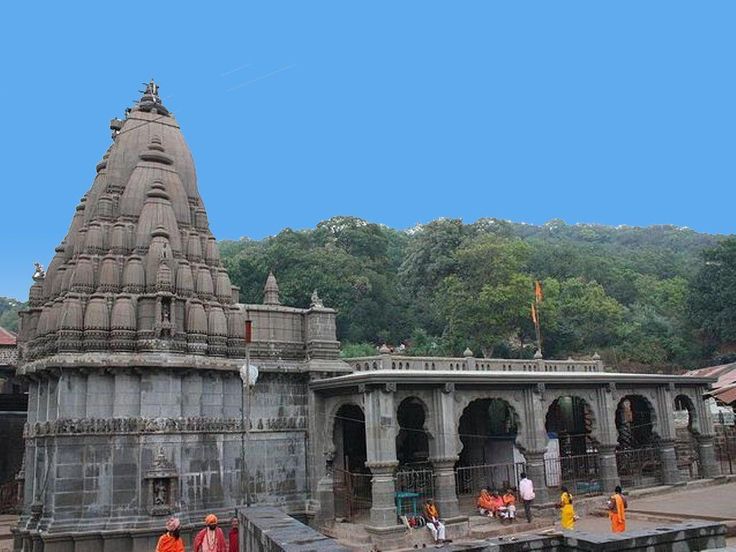
The Lingaraj Temple is a highly revered Hindu temple dedicated to Lord Shiva and is located in Bhubaneswar, the capital city of the Indian state of Odisha. Here are more details about this ancient and significant temple:
Location: The Lingaraj Temple is situated in the heart of Bhubaneswar, within the Lingaraj Temple complex, covering a vast area.
Historical Significance: The temple's history dates back to the 7th century, making it one of the oldest temples in Bhubaneswar. It is considered a prominent example of Kalinga architecture.
Architectural Style: The Lingaraj Temple exemplifies the Kalinga style of architecture, characterized by its pyramid-shaped tower (vimana), intricate carvings, and sculptures. The temple complex is surrounded by a massive compound wall.
Deity: The main deity of the Lingaraj Temple is Lord Shiva, who is worshipped as "Harihara," a combined form of Lord Shiva and Lord Vishnu. The sanctum sanctorum houses the Shiva Lingam, representing the divine energy of Lord Shiva.
Bhoga Mandapa and Natya Mandapa: The temple complex includes a Bhoga Mandapa (assembly hall) and a Natya Mandapa (dancing hall). These structures exhibit elaborate carvings depicting scenes from Hindu mythology, celestial beings, and various forms of Lord Shiva.
Bindusagar Tank: The Lingaraj Temple complex is associated with the Bindusagar tank, a sacred water tank located nearby. Devotees believe that taking a dip in the tank during certain festivals is auspicious.
Rukuna Rath Yatra: The Lingaraj Temple is famous for the annual Rukuna Rath Yatra, a chariot procession that takes place during the Ashokastami festival. The deities of Lingaraj and his consort Parvati are taken in a chariot around the city.
Sculptures and Carvings: The temple is adorned with intricate sculptures and carvings that depict various deities, mythical creatures, and scenes from Hindu epics. The detailed artwork showcases the craftsmanship of the ancient Odishan artisans.
Yatra Shala: The Yatra Shala, a pillared hall in the temple complex, is used for cultural performances and gatherings during festivals. It adds to the vibrant atmosphere during celebrations.
Kalinga Architecture: The Lingaraj Temple is a prime example of the Kalinga architectural style prevalent in the region, characterized by the use of sandstone and the pyramid-shaped tower, called the deul. The temple is an architectural marvel reflecting the rich heritage of Odisha.
Temple Administration: The Lingaraj Temple is managed by the Lingaraj Temple Trust. The temple complex attracts a significant number of pilgrims and tourists throughout the year.
In summary, the Lingaraj Temple is not only a place of worship but also an architectural marvel and a cultural treasure that reflects the historical significance of Bhubaneswar. Devotees and visitors are drawn to its spiritual ambiance, intricate carvings, and the ancient traditions associated with this sacred site.
Lingaraj Temple is the largest Shiva Temples In India located in Bhubaneswar, the capital city of Odisha, India. It is considered to be the favorite temple of Bhubaneswar Maharaj. It is one of the oldest Shiva temples in the city and it is one of the greatest temples in the city according to the oldest (Histology). This temple is otherwise dedicated to Lord Shiva. But Lord Vishnu in the form of Shaligram is also present here. Near the temple is Bindusagar lake. This temple was founded in 617-657 AD / 0th or 11th century. By the way, this Shiva temple In India has a lot of recognition. Let me tell you that two demons named Litti and Vasas were killed here by Goddess Parvati, after the battle, when Shivji made a coup and called all the holy rivers to contribute, this is the Bindusagar lake.
Nearby is the huge temple of Lingaraj. Ever since this temple is worshiped in the name of Lord Shiva and from that day onwards this temple has a lot of recognition. People come here to seek the blessings of Lord Shiva. There is also a rule of worship here, although there are rules of worship everywhere, but the rules of this temple are as follows - According to the method of worship here, firstly a bath is done in Bindusarovar. Then Kshetrapati Anant Vasudev is seen. It is followed by Ganesh puja and then after worshiping Nandi, the vehicle of Shivji, enters the main place to see Lingaraja. Where the self-erecting ling of granite stone is eight feet thick and about one feet high.
15. Kotilingeshwara Shiva Temple, Kotilingeshwara
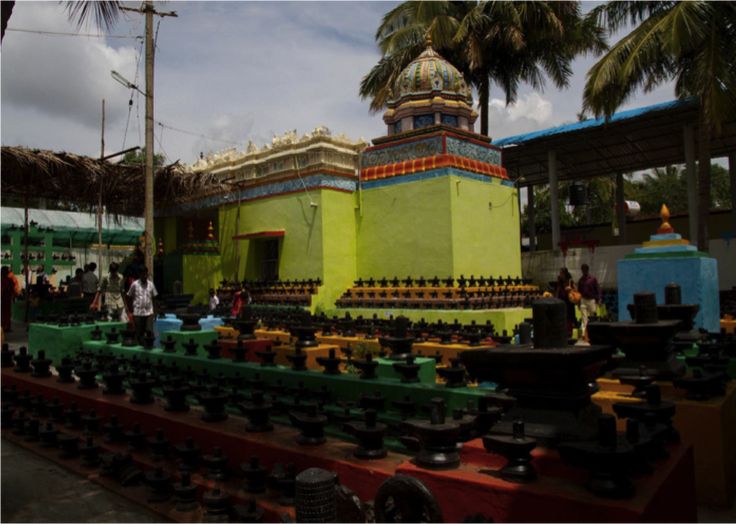
In this way, you must have seen many temples of Shiva, you have also seen many forms of them. Just think, if the size of the temple tells the glory of Lord Shiva and the power of Lord Shiva is realized as soon as you enter the temple, then what better thing would be. The world's highest Shivalinga is present in Kolar district of Karnataka, around which the Kotilingeshwara Shivlinga tells the unique story of the devotion of their devotees to Shiva.
A Shiva Temples In India, which is situated in the greenery of the holy, beautiful, and serene nature, tells itself the story of this temple being the most unique. Mahadev himself lives in its beauty that takes the mind and tells the story of the power of Shiva here. Along with the world's highest Shivling in this temple, there are about 1 crore Shivling as well.
It is called Kotilingeshwar Dham, which is situated in Kammasandra, a small village in Kolar district of Karnataka. On entering this temple, the devotees eye a tuck only to see the shape of the temple because it is situated in the form of Mahadev, which is perhaps the only one of its kind in the world. The size of the temple here is in the form of Shivling, which is also the highest Shivling in the world. The height of this temple in the form of Shivling is 108 feet. On seeing this, the devotees become fully Shiva and testify about the 1 crore Shivling present around the temple.
One may wonder why millions of Shivling are installed around the main temple. The secret of this marvel is hidden in the wishes of the devotees who come here. Devotees come to this temple with true devotion in their mind and according to their ability, get the Shivling ranging from 1 feet to 3 feet, installed here in their own name. It is the glory of Mahadev that now the number of these Shivalingas has reached about 1 crore.
In front of this huge Shiva-linga, Nandi is seen as grand and huge, whose height is 35 feet and it is situated on a platform 60 feet long, 40 feet wide and 4 feet high. Statues of Goddess Maa, Shri Ganesh, Shri Kumaraswamy and Nandi Maharaj are installed around this huge Shiva-linga as if they are offering their worship to their adorable. This amazing form of the temple and the belief that every vow will be completed, draws thousands of devotees from far and wide.
On entering the temple, the devotees in the statue of Kotilingeshwar get to see the visions of Lord Mahadev, and the innocent ones in the form of Kotilingeshwar appear eager to defeat the sufferings of their devotees. In addition to the main temple of Kotilingeshwar, there are 11 temples in this entire temple complex, in which the temples of Brahma, Vishnu, Annapurneshwari Devi, Venkataramani Swamy, Panduranga Swami, Panchmukh Ganapati, Ram-Lakshmana-Sita are mainly seated.
It is believed that by tying yellow thread on two trees present in the temple premises, every wish is fulfilled. In particular, the problems of marriage are removed. The marriage of girls from poor and poor families is done on behalf of the temple at a nominal fee. All the arrangements are done on behalf of the temple. At the same time, proper arrangements are made for the living and eating of devotees coming from far and wide. On Mahashivaratri, the beauty of this temple is seen on sight. The number of devotees earning pious benefits reaches 2 lakh by offering their devotion to their deity.
16. Murudeshwar Shiva Temple, Murudeshwara
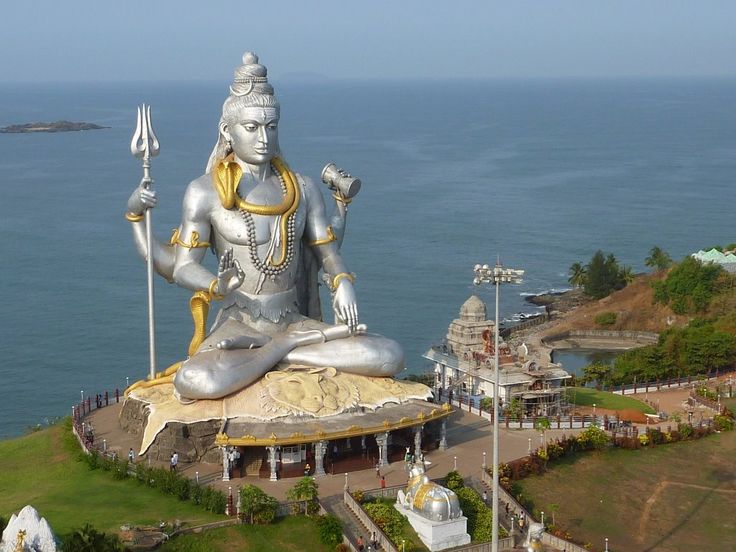
The Murudeshwar Shiva Temple, located in Murudeshwara, Karnataka, India, is a prominent Hindu pilgrimage site dedicated to Lord Shiva. Here are more details about this impressive temple:
Location: The Murudeshwar Shiva Temple is situated in the coastal town of Murudeshwara in the Uttara Kannada district of Karnataka, overlooking the Arabian Sea.
Raja Gopuram: The temple complex features a towering entrance called the Raja Gopuram, which stands at a height of about 237 feet (72 meters). It is one of the tallest temple entrance towers in India and is adorned with intricate carvings.
Main Attraction: The main attraction of the temple is a massive statue of Lord Shiva, known as the "Shiva Statue at Murudeshwar," which stands at the entrance of the temple complex and is visible from a great distance. The statue is approximately 123 feet (37 meters) tall and is surrounded by the Arabian Sea.
Shiva Lingam: The temple houses a sanctum sanctorum with a Shiva Lingam, symbolizing the divine presence of Lord Shiva. Devotees gather to offer prayers and perform rituals in the sanctum.
Temple Architecture: The temple architecture is a blend of traditional Dravidian and modern styles. The intricately carved pillars and artwork in the temple depict various mythological scenes and stories.
Rathotsava: The annual Rathotsava (chariot festival) at Murudeshwara is a grand celebration where the deities are taken out in a beautifully decorated chariot, and devotees participate in the festivities.
Murudeshwar Fort: Adjacent to the temple is the Murudeshwar Fort, which adds to the historical and cultural significance of the area. The fort offers panoramic views of the temple, the Arabian Sea, and the surrounding landscape.
Rope-Driven Elevator: Visitors have the option to take a rope-driven elevator to an observation deck located at the top of the Raja Gopuram. From this vantage point, one can enjoy breathtaking views of the Shiva statue and the coastal surroundings.
Kanduka Giri: The hill known as Kanduka Giri is associated with a legend from the Hindu epic Ramayana. It is believed that Lord Ravana, the demon king, threw a piece of the Atma Linga (Shiva Lingam) at this spot.
Beach and Water Activities: The temple is located on the shores of the Arabian Sea, and the beach near Murudeshwara is popular among tourists. Visitors can also engage in water activities, making it a versatile destination for both religious and recreational purposes.
Ghatashraddha Spot: A spot known as Ghatashraddha is considered auspicious for performing rituals in memory of departed ancestors. Devotees often visit this area to offer prayers for their ancestors.
Accommodations and Facilities: The temple complex provides accommodation facilities for pilgrims and tourists. Additionally, there are eateries and shops in the vicinity to cater to the needs of visitors.
The Murudeshwar Shiva Temple stands as a significant pilgrimage destination, attracting devotees and tourists alike with its awe-inspiring architecture, religious sanctity, and the scenic beauty of its coastal location.
Murudeshwar is around 180 km from Mangalore on the National Highway. On the route along the highway is the alluring Maravanthe Beach with the Arabian Sea roaring on the west and a serene river on the east along this route for almost 2 km.
The Murudeshwar Shiva Temples In India has a history that dates back to a few centuries. A small temple existed here for generations. But with time the temple disintegrated. A local businessman R N Shetty took up the renovation of the temple on a grand scale making the place the tourist haven that it is today. A large life-like statue of Lord Shiva invoking Ganga has been erected on top of the hill. The renovated temple is a blend of the Chalukya and Kadamba style of architecture. During the renovation, the entire fishing hamlet got a facelift, not just the temple. Guesthouses are in plenty. The place has a restaurant that is built on the seashore.
17. Kasivisvesvara Shiva Temple, Lakkundi
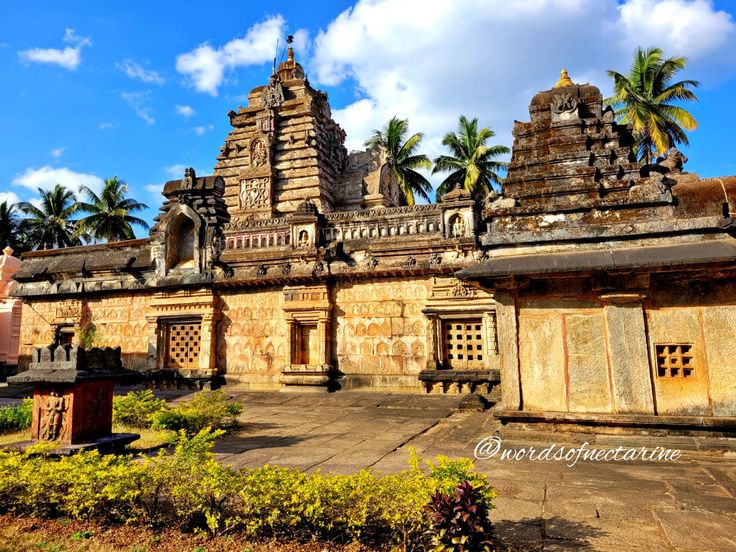
I believe there might be a slight confusion in your question. The Kasi Vishveshvara Temple is not located in Lakkundi. The Kasi Vishveshvara Temple is a famous temple dedicated to Lord Shiva and is situated in Lakkundi, Karnataka, India. Here are more details about this historical temple:
Location: The Kasi Vishveshvara Temple is located in Lakkundi, a village in the Gadag district of Karnataka, known for its rich historical and architectural heritage.
Historical Significance: The temple dates back to the Chalukyan period and is believed to have been constructed in the 11th century. It stands as a testament to the architectural and artistic achievements of the Chalukya dynasty.
Architectural Style: The temple is an excellent example of the Western Chalukyan style of architecture. It features intricate carvings, sculptures, and a well-designed structure that reflects the artistic sensibilities of the Chalukyan artisans.
Shiva Lingam: The main deity of the Kasi Vishveshvara Temple is Lord Shiva, and the sanctum houses a Shiva Lingam. Devotees visit the temple to seek the blessings of Lord Shiva.
Carvings and Sculptures: The temple is renowned for its detailed carvings that depict various mythological scenes, deities, and celestial beings. The carvings showcase the craftsmanship and skill of the artisans of that period.
Panchaloha Door: One of the notable features of the temple is its Panchaloha door, which is made of an alloy of five metals. The door is intricately designed with sculptural elements.
Nandi Mandapa: The temple complex includes a Nandi Mandapa, a pavilion housing a large Nandi (sacred bull), which serves as the mount of Lord Shiva. The Nandi Mandapa is adorned with artistic carvings.
Kannada and Nagari Inscriptions: The Kasi Vishveshvara Temple has inscriptions in both Kannada and Nagari scripts, providing historical information about the temple's construction and the contributions made by different rulers.
Lakkundi's Temples and Wells: Lakkundi is home to several other temples and ancient step wells (kalyani), making it an archaeological and historical hub. Visitors to the Kasi Vishveshvara Temple often explore other nearby structures.
Archaeological Museum: Lakkundi has an Archaeological Museum that displays artifacts and sculptures from various temples in the region, offering insights into the cultural and historical heritage of Karnataka.
In summary, the Kasi Vishveshvara Temple in Lakkundi is a cultural and architectural gem that reflects the grandeur of the Chalukyan dynasty. It attracts history enthusiasts, art lovers, and devotees who appreciate the beauty and historical significance of this ancient temple.
The Kashivisvesvara Temple is located in Lakkundi town of Gadag district, Karnataka. The Kasivisvesvara Temple is an excellent example of the Kalyani Chalukya school of architecture and Hoysala architecture. This Shiva temple is a Dvikuta, meaning it has two shrines facing each other. A small shrine faces the main shrine, which is located on the western side of the temple. An open 'mandapa' separates both the shrines. The Kashivisvesvara Shiva Temple shows evidence of inspiration derived from contemporary North Indian Sekhari and Bhumija styles of architecture.
The door-post moldings of the southern doorway are covered in beautiful scrollwork. On either side of the doorway stand pilasters. The lintel of the doorway carries an idol of Gajalakshmi. This feature is a trademark of the architecture of this region. The Shiva temple has two entrances, one at the eastern end and another at the southern end. The temple dome has been constructed in the north Indian style of architecture which resembles a lathe. It is one of the most graceful temples in this region.
18. Nagareshwara Shiva Temple, Karnataka
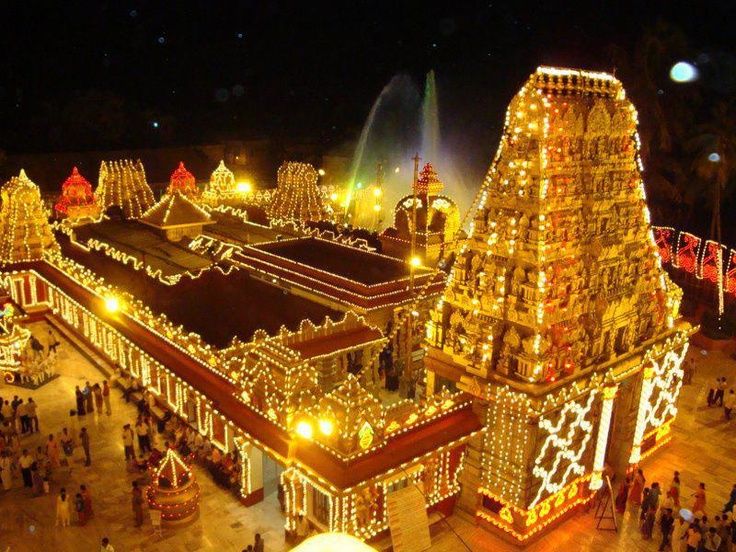
If Nagareshwara Shiva Temple is a newer or smaller temple that has gained prominence after my last update, I recommend checking with local sources, travel guides, or official websites for the most accurate and up-to-date information. Local residents or the tourism department in Karnataka may be able to provide more details about the temple, its history, and any associated legends or rituals.
For the most recent and accurate information, consider reaching out to local authorities, religious institutions, or conducting an online search for the latest details about the Nagareshwara Shiva Temple in Karnataka. Local guides or residents familiar with the region could also offer valuable insights into the temple's significance and features.The Kalyani Chalukya temple architecture paved way for the even more intricate and beautiful Hoysala architecture. If you want to see how Kalyani Chalukyas have influenced the Hoysalas in this regard, one of the best examples out there is the Nagareshwara Temple at Bankapura, in Haveri district of northern Karnataka.
This temple is known to many as "aravattu kambada gudi" (temple of sixty pillars) as it has 60+ huge lathe turned pillars across its main hallway. Exotic carvings in the around the main doorway is one distinct specialty of the Kalyani Chalukyas which the Hoysalas probably did not improve upon. This temple gives you (along with the ones at Lakkundi and Dambala) one of the best visual treats around the main entrance you can witness across temples of Karnataka.
The temple, known to be constructed in the early parts of the 12th century by the Kalyani Chalukyas, received support from the Hoysalas as well. Hoysala king Vishnuvardhana conquered the Bankapura fort, followed by the Hanagal fort to establish the Hoysala supremacy in the region that was continued by his grandson Veera Ballala II. The temple came under heavy attacks during the reign of the Bahamanis and Adil Shah, but its beauty remains in fact and is now maintained well by the ASI.
19. Kedareshwara Shiva Temple, Karnataka
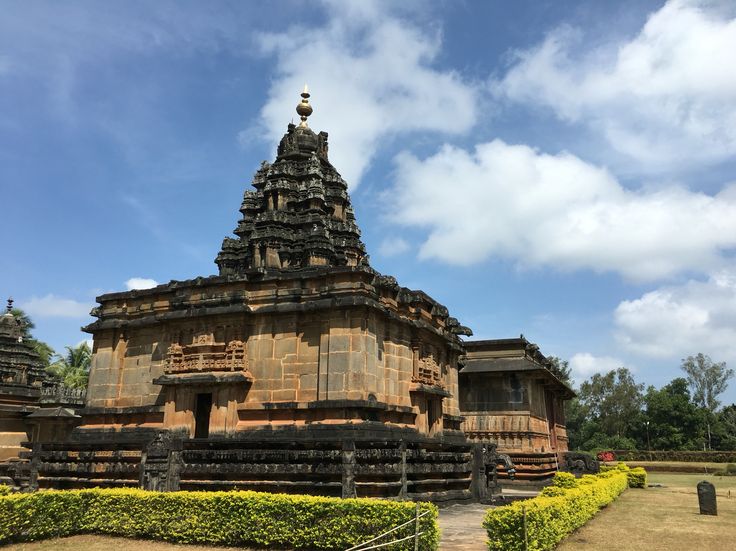
The Kedareshwara Temple is a historic Hindu temple dedicated to Lord Shiva, located in the town of Halebidu in the Hassan district of Karnataka, India. Here are more details about the Kedareshwara Shiva Temple:
Location: The Kedareshwara Temple is situated in Halebidu, which was the regal capital of the Hoysala Empire in the 12th century. Halebidu is known for its Hoysala architecture and is a prominent historical and religious site.
Historical Significance: The Kedareshwara Temple is believed to have been constructed in the early 12th century during the Hoysala rule. It is part of the group of monuments in Halebidu, which is a UNESCO World Heritage Site.
Hoysala Architecture: The temple exemplifies the Hoysala architectural style, characterized by intricate carvings, detailed sculptures, and decorative elements. The exterior of the temple is adorned with ornate friezes and sculptures depicting various mythological and religious themes.
Deity: The main deity of the Kedareshwara Temple is Lord Shiva. The sanctum sanctorum houses a Shiva Lingam, representing the divine form of Lord Shiva.
Kedara Gowri Festival: The temple hosts an annual festival known as the Kedara Gowri Vrata. Devotees participate in rituals and celebrations during this festival to seek the blessings of Lord Shiva and Goddess Parvati.
Architecture and Sculptures: The temple is known for its intricate carvings that adorn the walls, pillars, and ceilings. The outer walls depict scenes from Hindu epics like the Ramayana and the Mahabharata, as well as various forms of Lord Shiva.
Star-Shaped Platform: The Kedareshwara Temple is built on a star-shaped platform (stellate plan), which is a distinctive feature of Hoysala architecture. The platform itself is an architectural marvel with detailed carvings.
Nandi Shrine: The temple complex includes a separate shrine for Nandi, the sacred bull and mount of Lord Shiva. The Nandi shrine is intricately carved and adds to the overall grandeur of the temple.
Dwarapalakas (Guardians): The entrance of the temple is flanked by elaborately carved dwarapalakas (guardians), representing celestial beings. These sculptures are a common feature in Hoysala temples.
Halebidu's Architectural Heritage: Halebidu is home to several other Hoysala temples, including the Hoysaleswara Temple dedicated to Lord Shiva. Visitors often explore the architectural wonders of Halebidu, making it a significant destination for history and art enthusiasts.
Heritage Site: Halebidu, along with the nearby Belur and Shravanabelagola, is recognized as a UNESCO World Heritage Site for its exceptional Hoysala architecture and cultural significance.
The Kedareshwara Temple in Halebidu stands as a testament to the artistic and architectural brilliance of the Hoysala dynasty. Devotees and tourists alike visit this historical site to appreciate its cultural heritage and spiritual significance.
The Kedareshwara Temple, dedicated to lords Shiva, dedicates the name of Dakshina Kedara (Kedareshwar of the South) to Balligave. The temple was initially constructed by the Western Chalukya regime, and then around 1060 AD, Hoysala King Vinayaditya is known to have given enormous amounts of donation and has added the typical Hoysala emblem of Sala slaying the lion on top of the Shikharas of two of the three sanctums. The Shiva temple is a Trikuta shrine, with Kedareshwara Linga in the main sanctum, a Brahma Linga in another, and a statue of Janardana form of Vishnu in the third. The Shiva temple sanctums also house statues of Suryanarayana and Bhairava.
All around the temple, the transition from Chalukya Architecture to Hoysala is very clearly noticeable. The Shiva temple is maintained in great shape, has one of the most beautiful Nandi statues you will come across all over Karnataka, and seems to have been the primary inspiration for many of the following Hoysala temples of the next 100 years, including the famous ones at Belur and Halebidu.
20. Daksheswara Mahadev Shiva Temple, Uttarakhand
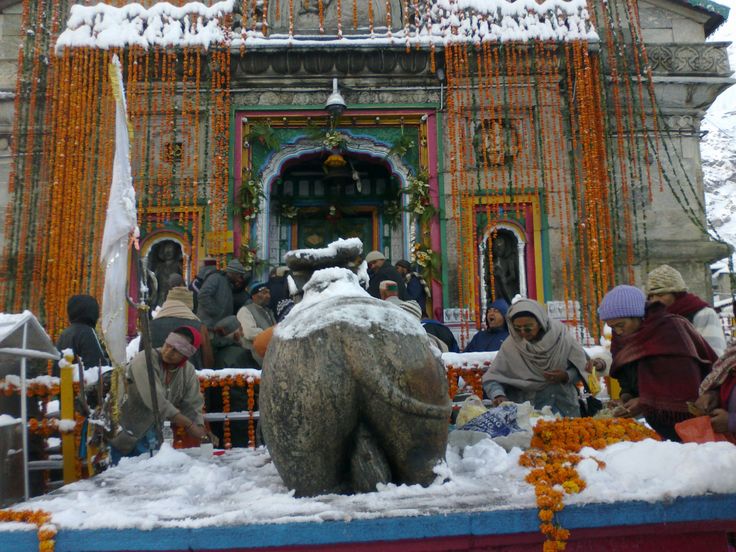
To get accurate and up-to-date details about Daksheswara Mahadev Shiva Temple in Uttarakhand, I recommend checking with local sources, travel guides, or official websites for the most recent information. Local residents or the tourism department in Uttarakhand may be able to provide details about the temple, its history, and any associated rituals or festivals.
If Daksheswara Mahadev Shiva Temple is a newer or smaller temple that has gained prominence after my last update, consider conducting an online search or reaching out to local authorities for the latest and most accurate information. Additionally, local guides or residents familiar with the region may offer valuable insights into the temple's significance and features.
Daksheswara Mahadev Temple or Daksha Mahadev temple is a Hindu Shiva temple dedicated to Lord Shiva. Named after King Daksha Prajapati, the father of Sati or Dakshayani, Lord Shiva ‘s first wife. Daksha is one of the fourteen Prajapatis, creator deities, presiding over procreation, and protector of life, in Hindu mythology.
The present Shiva Temples In India was built by Queen Dhankaur in 1810 AD and rebuilt in 1962, and is a place of pilgrimage for Shaivaite devotees on Maha Shivaratri. Standing next to the main temple is the Das Mahavidya temple, dedicated to the Mahavidyas, a venue for devotees of Devi to congregate for special pujas, during the Navratri celebrations. Also within the complex, there is a temple dedicated to Ganga. Next to the temple is the Daksha Ghat on the Ganges and close by is the Nileshwar Mahadev Temple.
21. Annamalaiyar Shiva Temple, Tamil Nadu
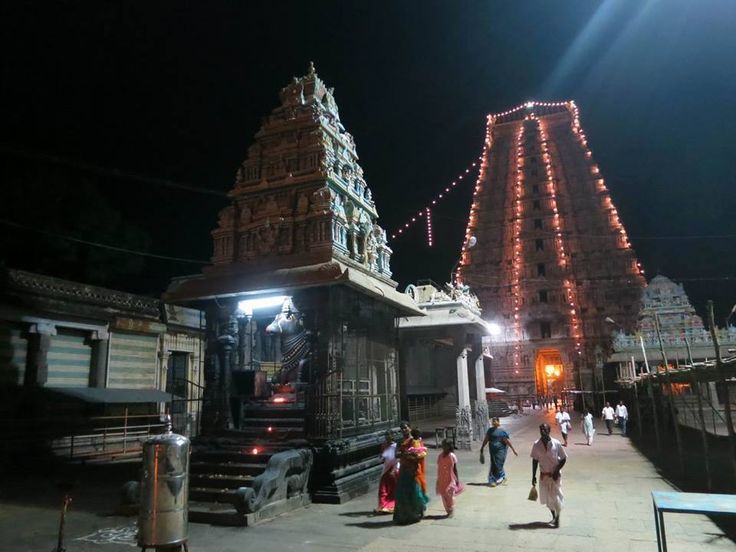
The Annamalaiyar Temple, also known as Arunachaleswarar Temple, is a prominent and ancient Shiva temple located at the base of the Arunachala hill in Thiruvannamalai, Tamil Nadu, India. Here are more details about this significant temple:
Location: The Annamalaiyar Temple is situated in the town of Thiruvannamalai, at the foothills of the Arunachala hill. Thiruvannamalai is considered one of the holiest Shaiva pilgrimage sites in Tamil Nadu.
Historical Significance: The temple has a rich history and is believed to have been originally built during the Chola dynasty in the 9th century. It has undergone renovations and expansions under various rulers, including the Vijayanagara and Nayak dynasties.
Arunachala Hill: The temple is located at the base of the Arunachala hill, which is considered a sacred manifestation of Lord Shiva. The hill is also associated with the legend of Lord Shiva taking the form of a massive column of fire (Arunachala) to settle a dispute between Brahma and Vishnu.
Architecture: The Annamalaiyar Temple exhibits a Dravidian architectural style with towering gopurams (entrance towers), pillared halls, and intricate carvings. The temple complex covers a vast area and has several shrines dedicated to different deities.
Main Deity: The presiding deity of the temple is Lord Arunachaleswarar, a form of Lord Shiva. The sanctum sanctorum houses a lingam, representing Lord Shiva, and devotees offer prayers to seek the blessings of Arunachaleswarar.
Uniqueness of the Lingam: The Lingam in the temple is believed to be a manifestation of the element fire (Agni Lingam), symbolizing the divine presence of Lord Shiva as the eternal fire.
Girivalam: The circumambulation (Girivalam) of the Arunachala hill is a significant pilgrimage practice. Devotees walk around the hill, and it is believed to be spiritually auspicious, especially during full moon nights.
Deepam Festival: The Annamalaiyar Temple hosts the grand annual Karthigai Deepam festival, where a huge flame is lit on the hill. It is one of the largest religious gatherings, attracting devotees from across the country.
Arunachala Puranam: The temple is associated with the Arunachala Puranam, a Tamil literary work that describes the greatness of Arunachala and the significance of worshipping Lord Shiva in this sacred place.
Thousand-Pillared Hall: The temple complex includes a Thousand-Pillared Hall, which is a marvel of architectural and sculptural beauty. The hall features intricately carved pillars and sculptures depicting various deities and mythological scenes.
Sri Ramana Maharshi Ashram: The town of Thiruvannamalai is also known for the presence of the Sri Ramana Maharshi Ashram. Ramana Maharshi, a revered spiritual teacher, spent a significant part of his life near the Arunachala hill.
In summary, the Annamalaiyar Temple in Thiruvannamalai is not only a place of worship but also a symbol of spiritual significance, attracting devotees, pilgrims, and tourists alike. The temple's association with the sacred Arunachala hill adds to its religious and cultural importance in the Hindu tradition.
Lord Shiva has his largest dwelling in Thiruvannamalai, in the name of Annamalaiyar temple, which dates back to 1000s of years and has a mention in the oldest Tamil literature like Thevaram and Thiruvasagam.
When Lord Brahma (the Creator) and Lord Vishnu (the Protector) entered into a quarrel to ascertain who was the most powerful, Lord Shiva entered into the scene to evaluate their power.
To assess their strength, He announced a contest, where the winner is the one who could spot his crown and his feet. After announcing the contest, HE immediately transformed into a Big Spark of fire, which stretched from the Heaven to the Earth.
While Lord Vishnu took the form of Varaha and excavated deeper into the land to locate Lord Shiva’s feet, Lord Brahma became a swan and flew high in the sky to spot the crown of Lord Shiva.
22. Taraknath Shiva Temple, West Bengal
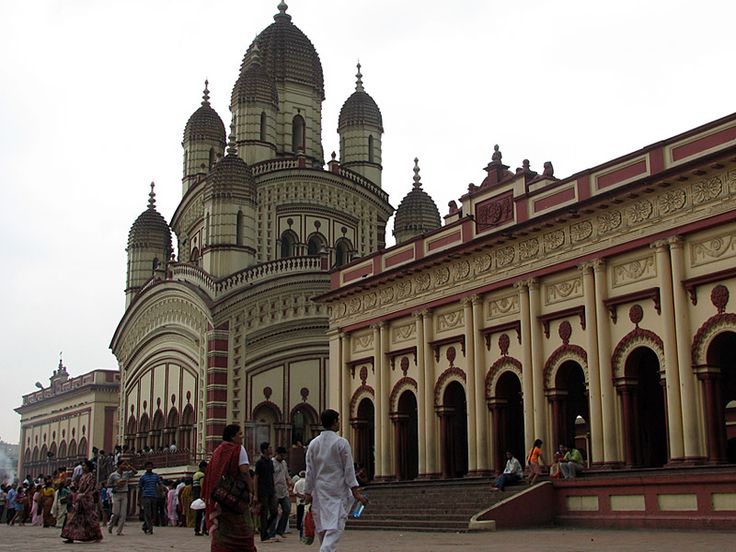
The Tarakeswar or Taraknath Shiva Temple is a significant Hindu temple dedicated to Lord Shiva and is located in the town of Tarakeswar in the Hooghly district of West Bengal, India. Here are more details about this revered temple:
Location: The Taraknath Shiva Temple is situated in Tarakeswar, a town known for its religious and cultural significance. It is approximately 58 kilometers away from Kolkata, making it easily accessible for devotees and visitors.
Historical Significance: The temple has a history dating back to the late 18th century. It is believed to have been built by Raja Bharamalla, a local Zamindar (landowner), during the late 18th century. The temple has undergone renovations and expansions over the years.
Main Deity: The presiding deity of the Taraknath Temple is Lord Shiva, worshipped in the form of a Shiva Lingam. Devotees visit the temple to seek the blessings of Lord Taraknath.
Festivals: The most significant festival celebrated at Taraknath Temple is the Maha Shivaratri, which attracts a large number of devotees. During this festival, special prayers, rituals, and cultural programs are organized.
Rath Yatra: The annual Rath Yatra (chariot procession) is another important event at Taraknath Temple. The deities are taken out in a grand procession, and devotees participate in pulling the chariot as an act of devotion.
Bathing Ghat: The Tarakeswar town is known for its bathing ghat on the Hooghly River. Devotees often take a dip in the river before visiting the temple, considering it as an auspicious ritual.
Shiva Tandava Dance Statue: Within the temple complex, there is a statue depicting Lord Shiva in the form of Nataraja, performing the cosmic dance known as Shiva Tandava. This artistic representation adds to the cultural and religious ambiance of the temple.
Architecture: The architecture of Taraknath Temple reflects a blend of traditional Bengali and Odisha styles. The temple has a distinctive structure with a spire and intricate carvings on its exterior.
Nabaratna Style: The temple follows the Nabaratna style, featuring a nine-spired structure, with the central spire rising higher than the others. Each spire is adorned with Kalash (sacred pot) at the top.
Taraknath Baba: The temple is also associated with a saintly figure known as Taraknath Baba, who is believed to have spent his life in deep meditation and spiritual practices near the temple premises.
Pilgrimage Destination: Taraknath Temple is considered a significant pilgrimage destination, and devotees from various parts of West Bengal and neighboring states visit the temple to seek spiritual solace and blessings.
The Taraknath Shiva Temple, with its historical roots, cultural significance, and religious festivals, remains a revered place for devotees and a symbol of the rich religious heritage of West Bengal.
Taraknath Temple is one of the most ancient Shiva Temples In India. This is the major temple of Tarakeswar. It’s a spiritual place where you can find your self. It is a major pilgrimage spot in the town of Tarakeswar. The Taraknath temple, dedicated to Lord Shiva where he is worshiped as Taraknath.
As per local legends, the temple was built after a dream which led the mendicant brother of Raja Vishnu Das to discover a Linga in the jungles near Tarakeswar. The temple was later built around the swayambhu linga (self-manifested) referred to as Baba Taraknath in 1729 AD.
Mondays are considered auspicious to pray Taraknath. Thousands of devotees visit the temple during Maha Shivaratri in Phalgun month and Gajan Festival in Chaitra month. Sravana month (July - August) is also considered auspicious for Shiva and special poojas and worships are held on every Monday of the month. The temple worship timings are from 6:00 am to 1.30 pm and evening 4:00 pm to 7:00 pm.
23. Vadakkunnathan Shiva Temple, Kerala
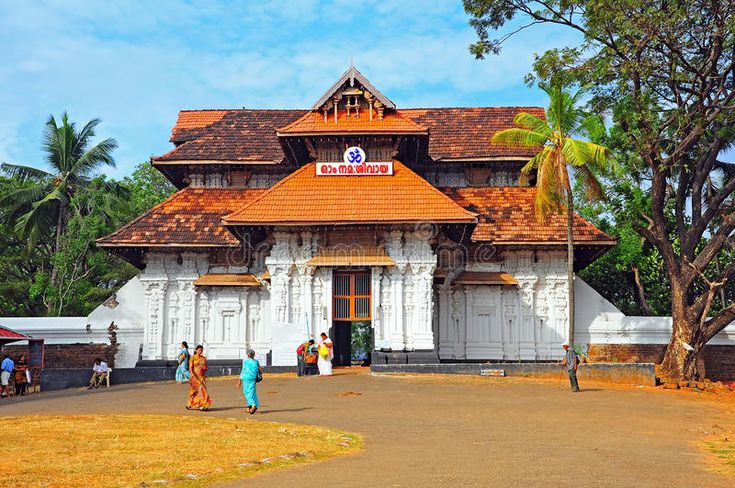
The Vadakkunnathan Temple is a prominent Hindu temple dedicated to Lord Shiva and is located in Thrissur, Kerala, India. Here are more details about this ancient and revered temple:
Location: The Vadakkunnathan Temple is situated in the heart of Thrissur town, on the hillock called Thekkinkadu Maidan.
Historical Significance: The temple holds great historical and cultural significance and is believed to be one of the oldest temples in Kerala. It is considered to have been built in the classical architectural style of Kerala.
Architectural Style: The Vadakkunnathan Temple showcases classic Kerala temple architecture. The temple structure is a marvel with its wooden carvings, murals, and traditional architectural elements. The temple is surrounded by a massive stone wall.
Shiva Lingam:The main deity of the temple is Lord Shiva, worshipped in the form of a Shiva Lingam. The sanctum sanctorum also houses deities like Parvati, Ganapati, and others.
Nalambalam: The temple complex includes a Nalambalam, a series of smaller shrines dedicated to various deities. Each of these shrines is enclosed by a separate circular wall.
Koothambalam: Vadakkunnathan Temple is known for its Koothambalam, a traditional theater space within the temple complex. It is a venue for staging traditional temple art forms and cultural performances.
Murals: The temple is adorned with beautiful murals that depict various episodes from the Hindu epics like the Ramayana and the Mahabharata. These murals are considered important in the history of Indian art.
Sahasrakala Abhishekam: The temple is famous for the grand Sahasrakala Abhishekam, a ritual in which the deity is anointed with a thousand pots of sacred water. This is a major event that draws devotees and tourists to witness the spectacle.
Thrissur Pooram: Vadakkunnathan Temple is closely associated with the grand Thrissur Pooram festival, one of the most famous temple festivals in Kerala. It is an annual event that involves a colorful procession of elephants, traditional music, and fireworks.
Open-Air Theatre: The temple compound has an open-air theatre where Kathakali performances and other classical art forms are staged, adding to the cultural richness of the temple.
Kerala's Cultural Heritage: Vadakkunnathan Temple is not only a place of worship but also a symbol of Kerala's cultural heritage. The temple's architecture, rituals, and festivals contribute to the cultural identity of the region.
Vilwadrinatha Temple: Adjacent to Vadakkunnathan Temple is the Vilwadrinatha Temple dedicated to Lord Rama. The deity is believed to have been installed by Lord Rama himself.
Visitors and devotees are drawn to Vadakkunnathan Temple for its spiritual ambiance, architectural beauty, and its role in preserving and promoting Kerala's rich cultural and religious traditions.
Shiva here is popularly known as Vadakkunnathan (The Lord of the North). His abode is the Kailash in the Himalayas. Since the Himalayas are to the north of India, this name probably refers to that fact.
According to a very popular legend, this temple was built by Parasurama. He is the 6th incarnation of Lord Vishnu and precedes both Rama (7th incarnation) and Krishna (8th incarnation). Thrissur Pooram is held at the Tekkinkadu Ground (there used to be a teak forest here) around the Vadakkunnathan Temple. Only Hindus can enter the temple. However, non-Hindus can access the Tekkinkadu Ground and participate in Thrissur Pooram.
24. Bhavnath Mahadev Shiva Temple, Gujarat
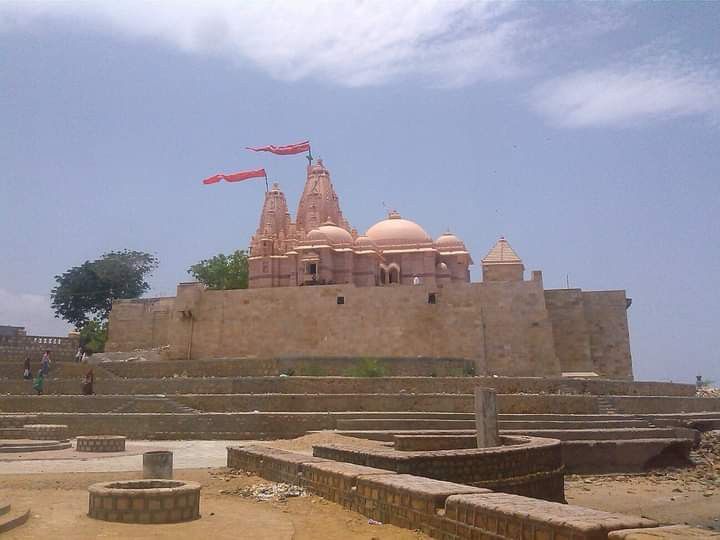
The Bhavnath Mahadev Temple is a revered Hindu shrine dedicated to Lord Shiva and is located near the Gir Forest in the state of Gujarat, India. Here are more details about this significant temple:
Location: The Bhavnath Mahadev Temple is situated near the town of Junagadh, at the foothills of the Girnar mountain range. It is particularly known for the Maha Shivaratri festival, which attracts a large number of devotees.
Historical Significance: The temple has historical significance and is believed to be associated with the mythology of Lord Shiva. It is considered one of the important Shiva temples in Gujarat.
Girnar Mountain Range: The temple is located in close proximity to the Girnar mountain range, known for its historical and religious importance. Girnar is a pilgrimage site and is home to various temples and ashrams.
Architecture: The architecture of Bhavnath Mahadev Temple reflects the traditional Gujarat style. The temple complex includes the main sanctum dedicated to Lord Shiva and other smaller shrines.
Shiva Lingam: The presiding deity of the temple is Lord Shiva, worshipped in the form of a Shiva Lingam. Devotees offer prayers and perform rituals to seek the blessings of Lord Mahadev.
Maha Shivaratri Festival: The Maha Shivaratri festival at Bhavnath Mahadev Temple is a major celebration. Devotees from various parts of Gujarat and neighboring states gather at the temple to celebrate the night dedicated to Lord Shiva.
Naga Sadhus: During Maha Shivaratri, the temple complex becomes a gathering place for Naga Sadhus (naked ascetics), who arrive for the holy dip in the Mrigi Kund (a sacred pond) and participate in the procession.
Rituals and Aarti: Special rituals and aarti ceremonies are performed during the Maha Shivaratri festival. The temple is beautifully illuminated, creating a divine atmosphere.
Mrigi Kund: The Mrigi Kund, located near the temple, is considered sacred. Devotees take a holy dip in the kund as a part of their religious observance.
Girnar Parikrama: The Girnar Parikrama, a circumambulation of the Girnar mountain, is considered auspicious. Pilgrims often undertake this journey, visiting the Bhavnath Mahadev Temple as an integral part of their pilgrimage.
Akhanda Deep: An Akhanda Deep (eternal lamp) is kept lit at the temple, symbolizing the eternal presence of Lord Shiva.
Temples on Girnar Mountain: The Girnar mountain range houses several temples, including the famous Amba Mata Temple. Pilgrims visiting Bhavnath Mahadev often explore the other temples on Girnar.
The Bhavnath Mahadev Temple, with its scenic surroundings and spiritual significance, remains a focal point for devotees and pilgrims during the Maha Shivaratri festival. The temple's connection to the Girnar mountain range adds to its allure as a sacred destination in Gujarat.
This temple is dedicated to Lord Shiva and has been believed to have stood here at Junagadh from ancient times. Bhavnath Mahadev Temple is one of the foremost Holy Places in Junagadh city and famous for Bhavnath Fair which is visited by devotees from around the world.
The Shiva Temples In India is located in the neighboring area of the Girnar mountain range which is near to Girnar Taleti. From Girnar Taleti one has to reach the temple by foot climbing up to the Girnar hills. The Bhavnath Mahadev Temple is surrounded by many ancient holy places resting at the foothills of Girnar.
Every Year at the temple two key festivals are celebrated which include Maha Shivaratri and Lili Parikrama.
A five-day Bhavnath Mahadev Fair (Bhavnath Mahadev Mela) is held during the festival of Mahashivratri which is a worldwide tourist attraction. The Mahapuja (Prayers) of Lord Shiva takes place at midnight in this temple on the 14th day of the dark half of the month of Magh, as per the Hindu calendar.
25. Srikalahasti Shiva Temple, Andhra Pradesh
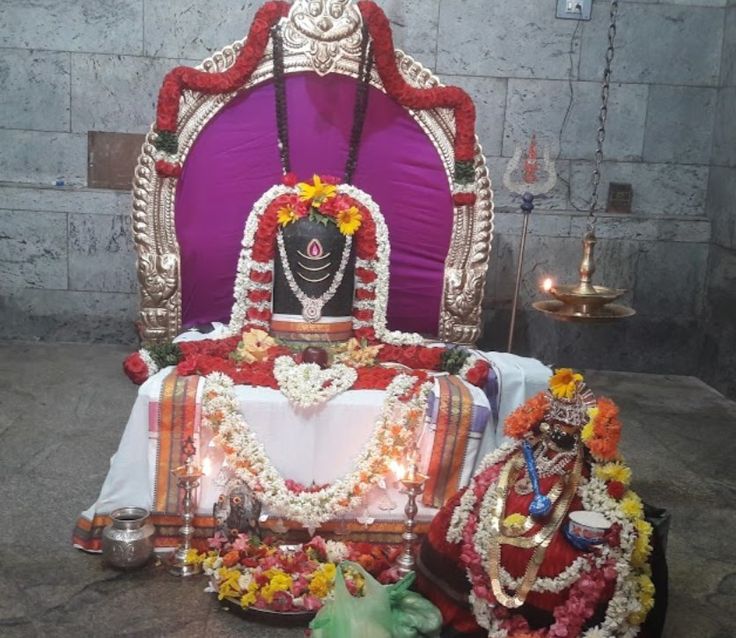
The Srikalahasti Temple, also known as the Sri Kalahasteeswara Swamy Temple, is a renowned Hindu temple dedicated to Lord Shiva. It is located in the town of Srikalahasti, in the Chittoor district of Andhra Pradesh, India. Here are more details about this significant temple:
Location: The Srikalahasti Temple is situated on the banks of the River Swarnamukhi, near the convergence of three important rivers: Swarnamukhi, Bhima, and Kalyani. The town of Srikalahasti is approximately 38 kilometers away from Tirupati.
Historical Significance: The temple has a rich history that dates back to the ancient period. It is believed to have been constructed during the Pallava dynasty and later expanded by the Chola and Vijayanagara dynasties.
Architectural Style: The temple reflects the Dravidian style of architecture. The towering gopurams (entrance towers), pillared halls, and intricate carvings showcase the architectural grandeur of South Indian temples.
Sri Kalahasteeswara Swamy: The presiding deity of the temple is Lord Shiva, worshipped in the form of Sri Kalahasteeswara Swamy. The Shiva Lingam in the sanctum is revered for its unique tilt, believed to have occurred due to a divine event.
Vayu (Wind) Lingam: Srikalahasti is famous for the Vayu Lingam, representing Lord Shiva as the God of Wind. Devotees believe that worshipping the Vayu Lingam can help in attaining salvation.
Sri Subrahmanya Swamy Temple: The Srikalahasti Temple complex also houses the Sri Subrahmanya Swamy Temple dedicated to Lord Murugan (Subrahmanya), the son of Lord Shiva.
Panchabhoota Sthalas: Srikalahasti is considered one of the Panchabhoota Sthalas, representing the five elements. Here, it is associated with Vayu (wind). The other four Panchabhoota Sthalas are Kanchipuram (Earth), Tiruvanaikaval (Water), Tiruvannamalai (Fire), and Chidambaram (Space).
Rahu-Ketu Dosha Nivarana: Srikalahasti Temple is renowned for its significance in mitigating the effects of Rahu and Ketu doshas in a person's horoscope. Devotees often visit the temple to perform special poojas for this purpose.
Pathala Ganapathi Temple: Within the temple complex, there is a shrine dedicated to Pathala Ganapathi, considered a unique and powerful form of Lord Ganesha.
Rahu-Ketu Kala Sarpa Dosha Pooja: The temple offers a special pooja known as the Rahu-Ketu Kala Sarpa Dosha Pooja, which is believed to neutralize the adverse effects of planetary positions in an individual's horoscope.
Bhakta Kannappa Story: The temple is associated with the legendary devotion of Bhakta Kannappa, a hunter who demonstrated unwavering faith by offering his own eyes to Lord Shiva.
Festivals: The Maha Shivaratri festival is celebrated with great enthusiasm at Srikalahasti Temple. The annual Brahmotsavam is another major festival attracting devotees from various parts of the country.
The Srikalahasti Temple stands as a significant pilgrimage site, not only for its architectural and historical importance but also for its spiritual ambiance and the belief in its power to alleviate astrological afflictions. Devotees visit the temple seeking blessings, spiritual solace, and relief from doshas and ailments.
Srikalahasti temple is a very famous Shiva Temples In India located in the state of Andhra Pradesh in India. It is one of the most well-known temples in South India. Vayu is incarnated as a Lord Shiva and Worshipped as Kalahastheeswara. This can be seen from the other miraculous feature of Srikalahasti Temple – the Vayu-linga. In the temple, there is a lamp which a wavering flame throughout day and night without any traces of wind to facilitate it's flickering. This indicates the presence of Lord Vayu.
The Shiva linga is of white color and is said to be self-manifested- Swayambhu. Goddess Parvathi Devi is worshiped as Gnanaprasunambika. This temple is also considered as “Dakshina Kasi and Rahu-Ketu-Kshetra”. The main lingam is not touched even by the priest, even to date it remains untouched. Hence, abhishekam is not offered to the main lingam but the holy mixture of water, milk, sandalwood, flowers, camphor, and other key ingredients are offered to the Utsava Murthy.
26. Kandariya Mahadeva Temple, Khajuraho
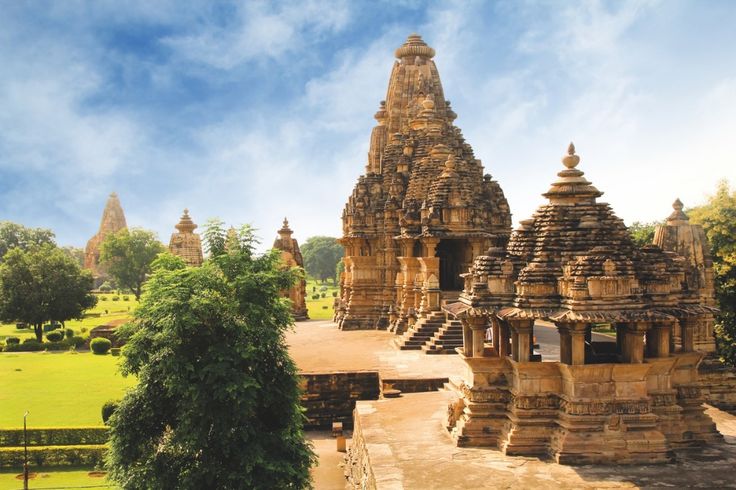
The Kandariya Mahadeva Temple is one of the most exquisite and significant temples among the Khajuraho Group of Monuments, a UNESCO World Heritage Site located in Khajuraho, Madhya Pradesh, India. Here are more details about this stunning temple:
Location: The Kandariya Mahadeva Temple is situated in the Western Group of Khajuraho Temples, which collectively form one of the most renowned temple complexes in India.
Architectural Style: The temple is a prime example of Nagara-style architecture, prevalent in the medieval temples of Northern India. The intricate carvings and sculptural details showcase the artistic and architectural brilliance of the Chandela dynasty, who built the Khajuraho temples.
Dedication: The Kandariya Mahadeva Temple is dedicated to Lord Shiva, particularly in the form of Mahadeva (the Great God). The name "Kandariya" is derived from the word "Kandara," which means cave. It is believed that the temple's design represents Mount Kailash, the abode of Lord Shiva.
Construction Period: The temple was constructed around 1025-1050 CE during the reign of King Vidyadhara, a Chandela ruler. This period is considered the peak of temple-building activity in Khajuraho.
Spire and Vimana: The Kandariya Mahadeva Temple is renowned for its towering shikhara (spire) that reaches a height of about 31 meters (100 feet). The main sanctum, or vimana, is adorned with multiple smaller spires, creating a breathtaking visual effect.
Erotic Sculptures: Like many other temples in Khajuraho, the Kandariya Mahadeva Temple features intricate and elaborate erotic sculptures on its outer walls. These sculptures depict various aspects of human life, including sensuality and passion, and are considered a celebration of the beauty of life.
Outer Wall Sculptures: The temple is adorned with a multitude of finely carved sculptures portraying deities, celestial beings, dancers, musicians, and various mythological scenes. The artistry reflects the skill and craftsmanship of the sculptors of the time.
Makara Torana: The entrance to the sanctum is adorned with a magnificent Makara Torana, a mythical sea creature often depicted in Hindu art. The torana serves as an archway to the inner sanctum.
Maha Shivaratri Celebrations: Maha Shivaratri, a festival dedicated to Lord Shiva, is celebrated with great fervor at the Kandariya Mahadeva Temple. Devotees and tourists gather to witness the grandeur of the celebrations.
Pillared Mandapa: The temple has a pillared mandapa (hall) that leads to the sanctum. The mandapa is intricately carved with various motifs and sculptures.
Shiva Lingam: The inner sanctum houses a Shiva Lingam, the symbolic representation of Lord Shiva. Devotees offer prayers and perform rituals in the sanctum.
Light and Sound Show: In the evening, the Western Group of Khajuraho Temples, including the Kandariya Mahadeva Temple, hosts a mesmerizing light and sound show that narrates the history and mythology associated with the temples.
The Kandariya Mahadeva Temple stands as a testament to the architectural and artistic brilliance of the Chandela dynasty and is a major attraction for tourists and art enthusiasts visiting Khajuraho. The intricate carvings and sculptures make it a masterpiece of Indian temple architecture.
Kandariya Mahadeva Temple dedicated to the Hindu god Shiva in the form of the “the Great God of the Cave” is the largest & most ornate of the world heritage site tantric Hinduistic temples at Khajuraho, India. It was built during the reign of King Vidyadhara (r. c. 1003-1035 CE when Khajuraho served as the capital of the Chandela kingdom.
Kandariya Mahadeva Shiva Temples In India located in the Khajuraho a city of Madhya Pradesh at Lat Long of 24.8530° N, 79.9197° E, Kandariya Mahadev temple at 282-meter height from sea level.
27. Tungnath Temple, Uttarakhand
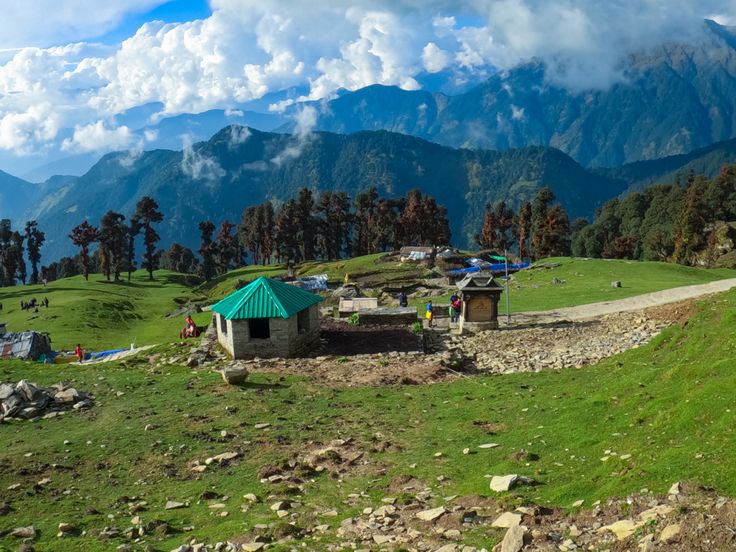
The Tungnath Temple is a sacred Hindu shrine dedicated to Lord Shiva and is located in the Rudraprayag district of Uttarakhand, India. Here are more details about this significant temple:
Location: Tungnath Temple is situated in the picturesque Garhwal Himalayan range in the state of Uttarakhand. It is nestled in the Tungnath mountain range at an altitude of approximately 3,680 meters (12,073 feet) above sea level, making it the highest Shiva temple in the world.
Importance: Tungnath is one of the Panch Kedar temples, a group of five sacred shrines dedicated to Lord Shiva in the Garhwal region. The other four Kedar temples are Kedarnath, Madhyamaheshwar, Rudranath, and Kalpeshwar. Tungnath is considered the highest and the third in the order of Panch Kedar pilgrimage.
Opening and Closing Dates: The temple remains open for a limited period each year, usually from April or May to October or November, depending on weather conditions. During the winter months, the temple is covered with snow, and the deity is ceremonially moved to a nearby village called Makkumath.
Legend: According to Hindu mythology, Tungnath is believed to be the place where the arms of Lord Shiva appeared. The Pandavas, after the Kurukshetra War, sought the blessings of Lord Shiva to absolve themselves of the sins of killing their own relatives. Shiva, however, wanted to avoid them and took the form of a bull (Bhima recognized him). The body parts of Shiva appeared at various locations, and Tungnath is associated with the arms.
Architecture: The temple follows traditional Himalayan architecture with a distinctive wooden structure. The temple complex also includes a Nandi bull statue and a pillared entrance.
Pilgrimage Trek: Pilgrims and devotees have to undertake a trek to reach Tungnath. The trek starts from Chopta, a popular base camp, and covers a distance of around 3.5 kilometers (2.2 miles). The trek offers stunning views of the surrounding Himalayan peaks.
Chandrashila Summit: Tungnath is a part of the trek to Chandrashila, a summit at an altitude of about 4,000 meters (13,000 feet) above sea level. Chandrashila offers panoramic views of the Himalayan ranges, including Nanda Devi, Trishul, and Chaukhamba.
Festivals: Maha Shivaratri is celebrated with great enthusiasm at Tungnath, attracting a significant number of devotees. The temple sees increased pilgrim activity during the summer months.
Spiritual Significance: Tungnath is revered as a sacred spot where devotees seek the blessings of Lord Shiva. The serene and spiritual ambiance of the temple, combined with the breathtaking natural beauty, adds to the pilgrimage experience.
Conservation Efforts: Due to the ecological importance of the region, efforts are made to promote responsible tourism and protect the fragile environment around Tungnath. Pilgrims are encouraged to follow eco-friendly practices during their visit.
The Tungnath Temple, perched in the lap of the Himalayas, not only holds religious significance but also offers a unique and serene setting for spiritual seekers and nature enthusiasts alike. The trek to Tungnath is an experience that combines devotion, adventure, and the beauty of the Himalayan landscape.
Tungnath temple is the world’s highest Lord Shiva Temples In India at an altitude of 12,073 ft from sea level. It is believed to be 5000 years old from the time of Mahabharath and comes third in the pecking order of Panch Kedar.
Tungnath is mainly famous for two things- first, the ancient Tungnath temple believed to be one thousand years old and considered as the world‘s highest Shiva temple located at an altitude of 3,680 Mts. Second, Chandersheela, where Lord Rama did penance for recovering from ’Brahmhatya,’ after killing Ravana who was a Brahmin.
The craze of Chandersheela (4,000 Mts) remains all-time high as the sunrise and 360 degrees panoramic views of the mighty Himalayas continue to attract a large number of tourists. But, the completely ignored ‘Ravansheela,’ has started pulling visitors without any publicity.
28. Natarajar Temple, Tamil Nadu
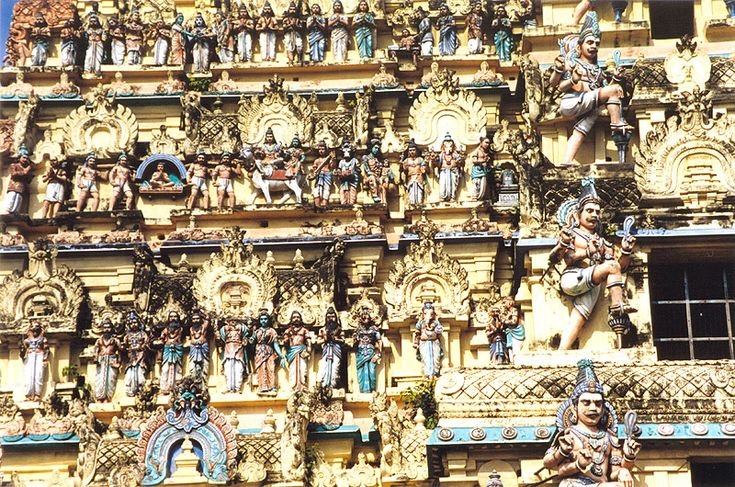
The Nataraja Temple, also known as the Chidambaram Temple, is a prominent Hindu temple dedicated to Lord Shiva in his form as Nataraja, the Cosmic Dancer. It is located in the town of Chidambaram in the Cuddalore district of Tamil Nadu, India. Here are more details about this significant temple:
Location: The Nataraja Temple is situated in the heart of Chidambaram, one of the major temple towns in Tamil Nadu.
Historical Significance: The temple has a rich history and is believed to have been originally constructed by the Chola dynasty in the 10th century. It underwent various renovations and expansions under different rulers, including the Pallavas and the Vijayanagara Empire.
Architectural Style: The temple showcases the Dravidian style of architecture and has five separate halls, representing the five elements of nature - earth, water, fire, air, and ether (space). The temple's unique feature is its gold-plated roof over the sanctum sanctorum.
Sanctum Sanctorum: The sanctum sanctorum, also known as the Chit Sabha or Kanaka Sabha, is dedicated to Lord Shiva as Nataraja, the Lord of Dance. The deity is represented in a cosmic dance pose (Ananda Tandava), symbolizing the eternal cycle of creation, preservation, and destruction.
Ardhanarishvara Form: Apart from the Nataraja form, the temple also has a shrine dedicated to Lord Shiva in the Ardhanarishvara form, where Shiva is depicted as half male and half female, symbolizing the union of Shiva and Parvati.
Thillai Nataraja Temple Pancha Bhoota Stalams: The Nataraja Temple is one of the Pancha Bhoota Stalams, representing the five elements. In this case, the temple is associated with the element of akasha (ether or space). The other Pancha Bhoota Stalams are Thiruvanaikaval (water), Kanchipuram (earth), Kalahasti (wind), and Tiruvannamalai (fire).
Ananda Tandava Festival: The annual Ananda Tandava festival is a major celebration at the Nataraja Temple. During this festival, the deity of Nataraja is taken in a procession around the temple, accompanied by traditional music and dance performances.
Rahasya Pooja: The Rahasya Pooja is a unique ritual conducted at the temple during the night, where the priests perform the worship in complete darkness. It is believed to symbolize the cosmic dance of Nataraja in the unseen, unmanifest aspect.
Pillared Halls: The temple complex includes several pillared halls, each with its own significance. The Thousand Pillar Hall, in particular, is renowned for its intricate sculptures and carvings.
Chidambaram Akasa Lingam: The Chidambaram Akasa Lingam is a formless representation of Lord Shiva that is believed to be present in the sanctum sanctorum. Devotees meditate on the Akasa Lingam, representing the formless aspect of the divine.
Govindaraja Perumal Temple: Adjacent to the Nataraja Temple is the Govindaraja Perumal Temple, dedicated to Lord Vishnu. Pilgrims often visit both temples during their visit to Chidambaram.
The Nataraja Temple in Chidambaram is not only a place of worship but also a center for arts, culture, and spirituality. Its association with the cosmic dance of Nataraja and its architectural grandeur make it a significant pilgrimage site and a cultural heritage symbol in Tamil Nadu.
Chidamabaram meaning “Sky of consciousness” or if you assume that its name is Chit+Ambalam meaning “The stage of performing arts” or if we refer to it by its Tamil name, Thillai ambalam ((meaning a place having Thillai trees-a species of mangrove trees) has a very unique temple in India. It is a temple of Lord Shiva as Nataraja ( the king of dancing). It is unique because more than 99% of Shiva temples depict him in the form of a Shiva Linga but here the Lord stands six feet tall in a remarkable dancing pose (People say the statue is made of Gold), that too in the pose of Ananda Thandava(The male dance of ecstasy).
He is also called “Thillai Koothan (the dancer of Thillai) in Tamil To a Saivite in Tamil Nadu ” the word temple “ would only indicate Chidambaram. Though God has this unique form, in this temple, he is also worshipped as the “Sky of consciousness” and this temple is referred to as Akasa Kshethra(the sky temple).
God has also worshipped here in the form of Emerald Linga as well as Crystal Linga. Another greatness of this temple is that it is the oldest Shiva Temples In India with a golden roof (AD 907-950). Due to this, it is called as Pon Ambalam (Golden temple). Another great peculiarity of this temple is the “Chidambara Rakasiyam (The secret of Chidambaram).
This Rakasiyam can be seen by the devotees through a window next to the sanctum sanctorum of the main Nataraja temple. Most of the time it would be covered by a curtain. When is open we can see the secret covered by layers of musk over which a golden Vilwa garland will hang. The devotees believe that the perennial dance of joy of god is going on there.
29. Kirateshwar Mahadev Temple, Sikkim
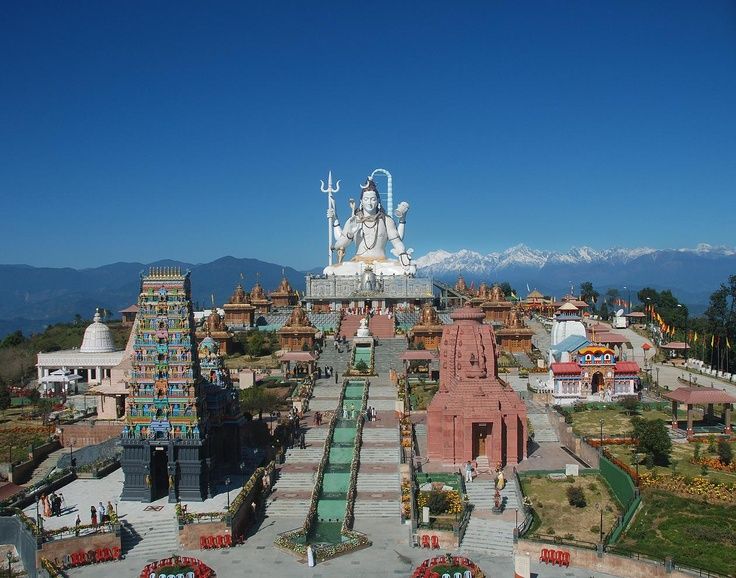
The Kirateshwar Mahadev Temple is a revered Hindu shrine dedicated to Lord Shiva and is located in the Legship area of West Sikkim, India. Here are more details about this significant temple:
Location: The Kirateshwar Mahadev Temple is situated on the banks of the River Rangeet, near the town of Legship, which is approximately 18 kilometers from the district headquarters of Geyzing in West Sikkim.
Historical and Mythological Significance: The temple has both historical and mythological significance. It is believed to date back to the medieval period. According to Hindu mythology, this is the place where Lord Shiva appeared in the form of a hunter (Kirat) and engaged in a battle with Arjuna, one of the Pandava brothers from the Mahabharata.
Legends of Kirat-Arjuna Battle: The temple is associated with the story of the Kirat-Arjuna battle, a significant episode from the Mahabharata. Arjuna, in his quest for Pashupatastra, encountered Lord Shiva in the form of a Kirat (hunter). A fierce battle ensued, and Arjuna realized the divine nature of the hunter when he witnessed the arrows of both warriors being neutralized by a third power. Impressed by Arjuna's valor, Lord Shiva revealed his true identity and granted him the powerful weapon.
Architecture:The Kirateshwar Mahadev Temple features traditional Sikkimese architectural style. The temple complex includes the main sanctum dedicated to Lord Shiva, along with other smaller shrines.
Shiva Lingam: The presiding deity of the temple is Lord Shiva, worshipped in the form of a Shiva Lingam. Devotees offer prayers and perform rituals to seek the blessings of Kirateshwar Mahadev.
River Rangeet: The temple is located on the banks of the River Rangeet, providing a scenic and serene setting. Pilgrims often take a dip in the river as a part of their religious observance.
Festivals: The Maha Shivaratri festival is celebrated with great fervor at the Kirateshwar Mahadev Temple. Devotees from various parts of Sikkim and neighboring regions gather to participate in the festivities and seek the blessings of Lord Shiva.
Legship Hot Springs: The vicinity of the Kirateshwar Mahadev Temple is known for its natural hot springs. The Legship Hot Springs are believed to have medicinal properties, and some devotees take a dip in these springs as a form of purification before visiting the temple.
Kirateshwar Mahadev Mela: The Kirateshwar Mahadev Mela is an annual fair held in the temple premises, drawing a large number of devotees and tourists. The fair includes cultural programs, traditional music, and dance performances.
Rabdentse Ruins: Nearby attractions include the ruins of Rabdentse, the second capital of the former Kingdom of Sikkim. The site provides historical insights into Sikkim's royal past.
The Kirateshwar Mahadev Temple stands as a sacred site in Sikkim, not only for its religious significance but also for its association with Hindu mythology. Pilgrims and visitors are drawn to the temple's spiritual ambiance, the legends it embodies, and the natural beauty that surrounds it.
Brightly scarlet colored big statue of Veer Balwaan Bajrang Bali lifting Dronachal Parvat in hand is located at the entrance of Kirateshwar Mahadev Mandir; Legship town under West Sikkim district in the Indian state of Sikkim. The temple is located at a distance of 5 kms from Pelling connected with Geyzing (also known as Gyalshing, headquarters of West Sikkim district) alongside Pemayangtse and 89 kms from the state capital city Gangtok.
Kirateshwar Mahadev Temple, a Hindu temple dedicated to Lord Shiva, is situated on the banks of beautiful River Rangit (or Rangeet), which has many mythological episodes of the Mahabharat attached to it. A foot suspension bridge takes the devotees from the main road to the temple. The temple is also known as Kirateshwar Mahadev Thaan or simply known as Shiv Mandir by the local people.
According to the Hindu mythology, pleased with Arjun’s (3rd of the Pandava brothers) hard penance and devotion, Lord Shiva appeared before him, in the very spot where the temple lies, as a Kirat or Hunter and blessed him with success in the Mahabharat war. Kirat means hunter hence the temple named Kirateshwar meaning the Hunter God.
30. Jambukeswarar Temple
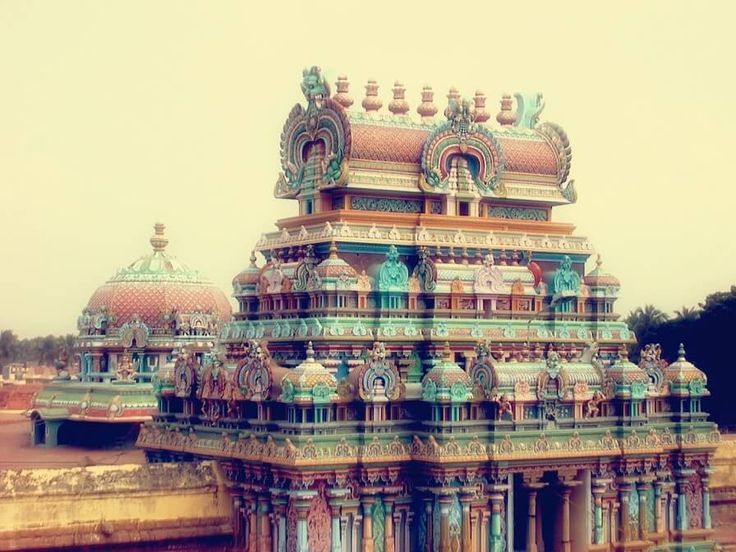
The Jambukeswarar Temple, also known as Thiruvanaikaval Temple, is a historic Hindu temple dedicated to Lord Shiva. It is located in the city of Tiruchirapalli (Trichy) in Tamil Nadu, India. Here are more details about this significant temple:
Location: The Jambukeswarar Temple is situated in the Srirangam island of the Cauvery River, near Tiruchirapalli, Tamil Nadu. Srirangam is renowned for its Ranganathaswamy Temple, one of the largest temple complexes in India.
Historical Significance: The temple has a rich history and is believed to have been in existence for several centuries. The Chola and Vijayanagara dynasties made significant contributions to its construction and expansion.
Architectural Style: The temple exhibits a combination of Dravidian and Vijayanagara architectural styles. The intricate carvings and sculptural details on the temple walls showcase the artistic skills of the craftsmen of that era.
Main Deity: The presiding deity of the Jambukeswarar Temple is Lord Shiva, worshipped in the form of a Lingam. The Lingam is said to represent Jambu (rose apple), which is why the temple is named Jambukeswarar.
Goddess Akilandeswari: The temple also houses a shrine dedicated to Goddess Akilandeswari, the consort of Lord Shiva. Devotees seek the blessings of both deities during their visit.
Water Tank and Prakara: The temple complex features a large water tank known as 'Sri Jambu Theertham,' which is believed to have healing properties. The temple is surrounded by seven concentric prakaras (enclosures), each with its own significance.
Legend of Goddess Akilandeswari: According to legend, Goddess Parvati took the form of Akilandeswari and performed penance under a mango tree at this location. Impressed by her devotion, Lord Shiva appeared before her in the form of a Jambu Lingam.
Aadi Perukku Festival: The Aadi Perukku festival celebrated in the Tamil month of Aadi is a significant event at the Jambukeswarar Temple. Devotees believe that on this day, the water in the tank gains medicinal properties, and people take a dip to purify themselves.
Pujas and Rituals: The temple follows a strict set of rituals and pujas. The priests perform daily rituals to the deity, and special pujas are conducted on auspicious occasions and festivals.
Rishaba Vahana Seva: The annual Rishaba Vahana Seva, where Lord Shiva is taken on a procession atop a Nandi (bull) vahana, is a major attraction for devotees.
Jambukeshwara Akilandeswari Temple at Varanasi: Apart from the Jambukeswarar Temple in Tiruchirapalli, there is another temple dedicated to Jambukeshwara Akilandeswari in Varanasi, where Lord Shiva is worshipped in the form of a Jambu Lingam.
The Jambukeswarar Temple, with its historical significance, architectural beauty, and religious fervor, remains an important pilgrimage site in Tamil Nadu. Devotees from various parts of the country visit the temple to seek the blessings of Lord Shiva and Goddess Akilandeswari.
Jambukeswarar Temple is situated in a suburb of Trichirapalli called Thiruvanaikaval. This temple is actually in an island surrounded by the river Kaveri and Kollidam.
Lord Shiva, the presiding deity of this temple is called Jambukeswar and the goddess is Sri Akilandeswari. Shiva is in the form of Lingam and is considered as an embodiment of the element water. There is a freshwater spring underneath the Shiv Linga. It is revered as one of the Pancha-Bhoota Stalams.
The temple was built by Kocengannan(Kochenga Chola), one of the Early Cholas, around 1,800 years ago. For more detailed description of the temple's origin and history, one can always Google.
The gopuram or the tower at the entrance of the temple looks very simple and unassuming. But once you enter the temple you will be amazed with the grandeur of the pillars and the sculptures. Sri Jambukeshwara Temple has five concentric walls and seven gopurams. It is believed that this temple was also built around the same time Ranganathaswamy temple was built.





